The 50 Most Important Figures of Commercial Real Estate Finance
By The Editors April 4, 2018 11:30 am
reprints
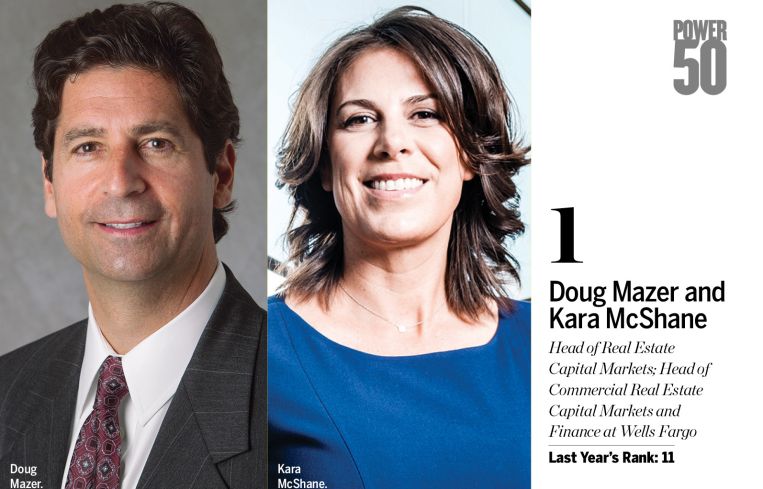


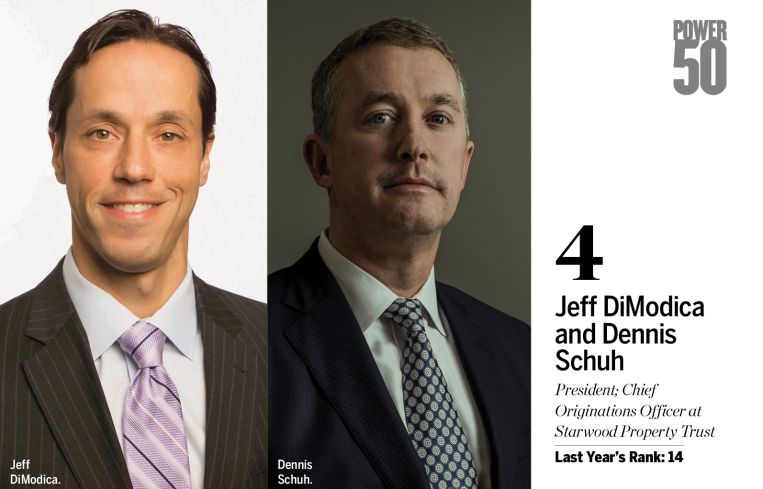
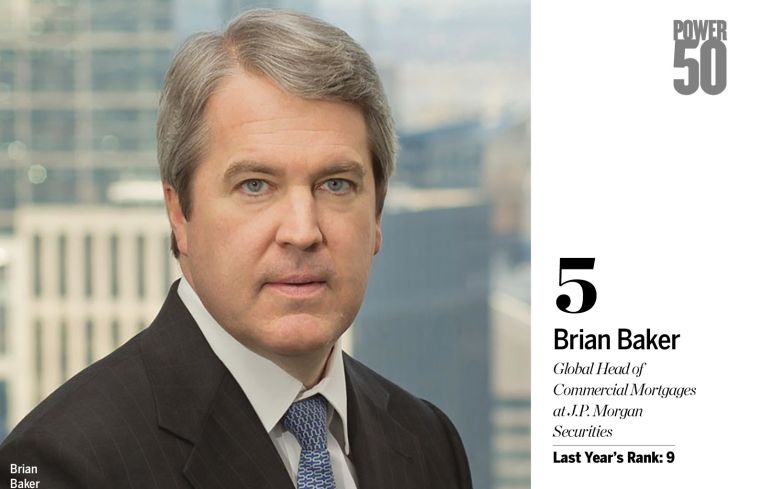



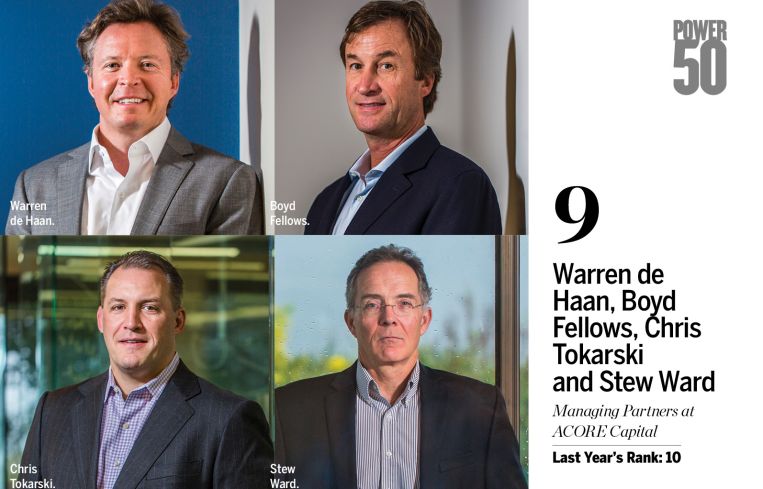

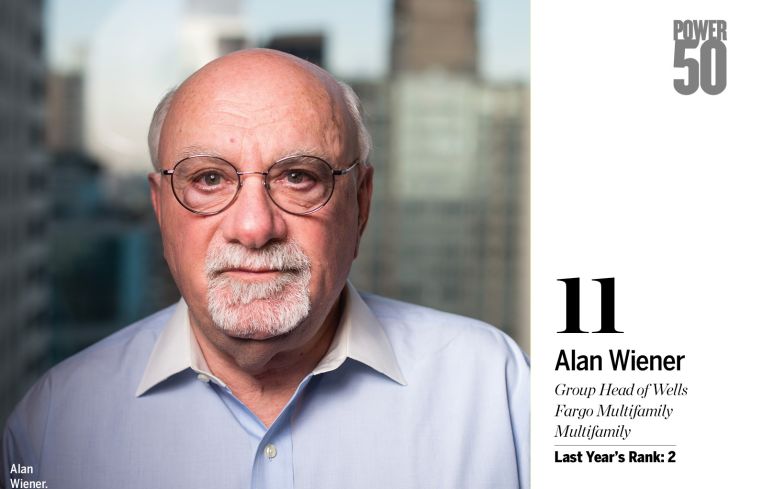
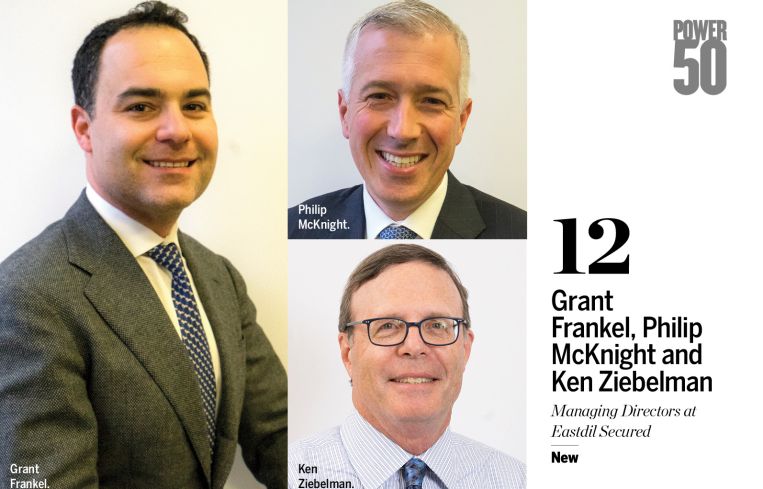
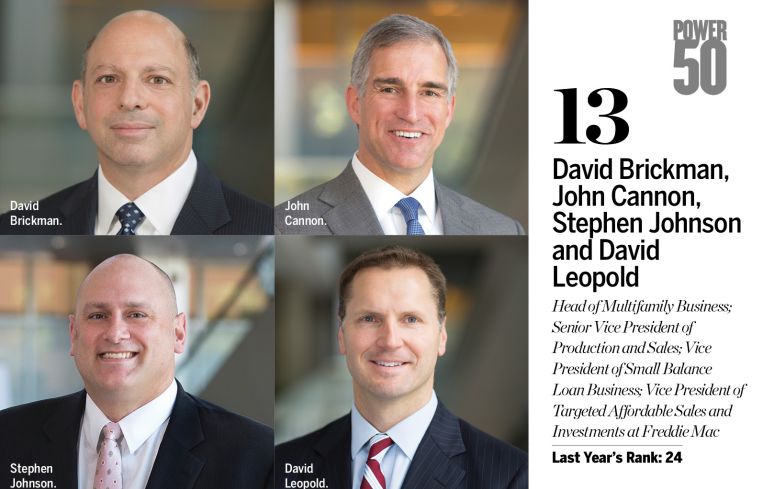



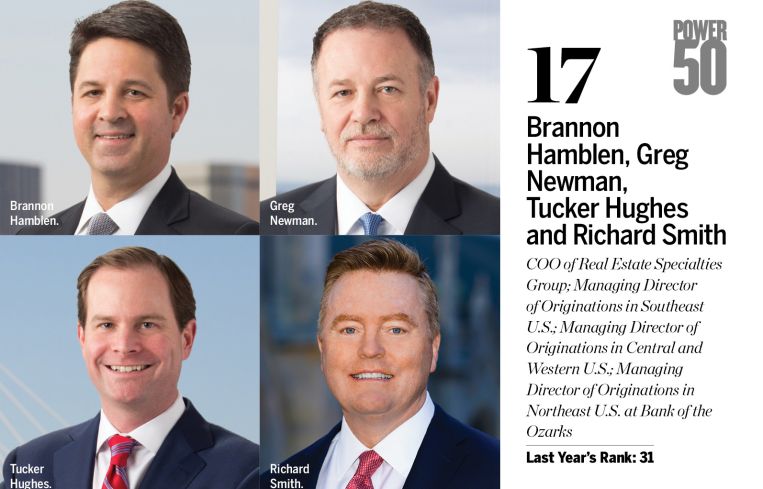

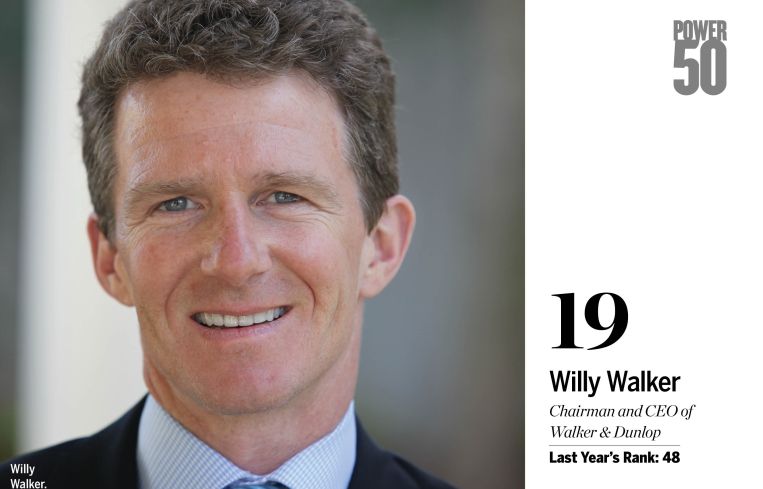
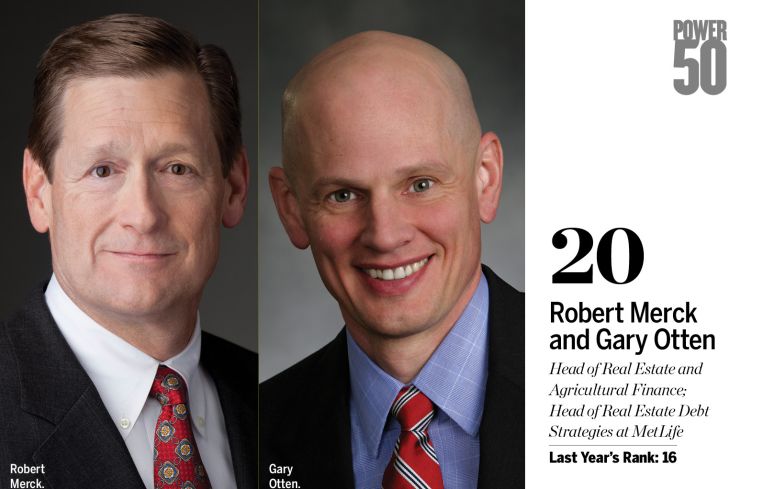
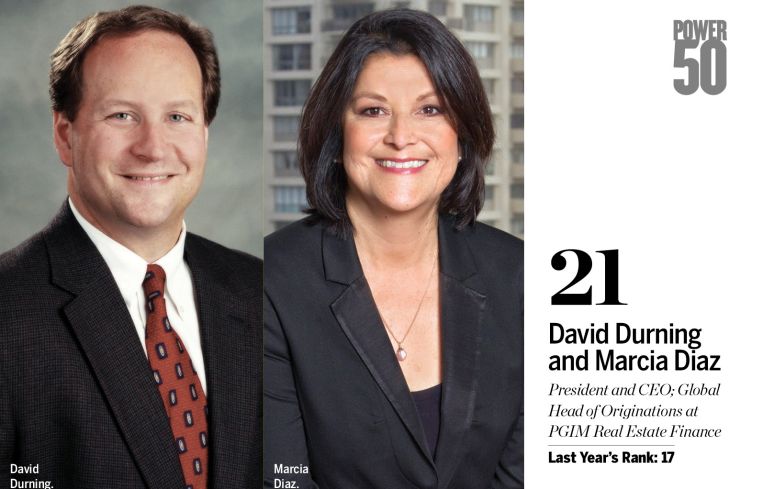
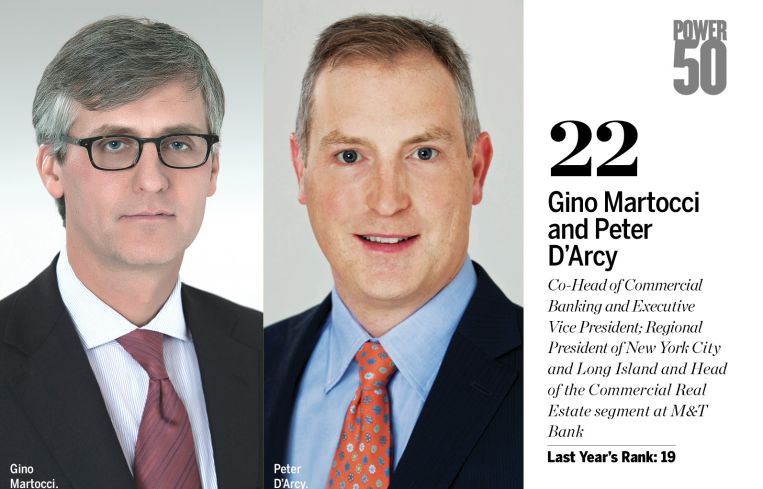
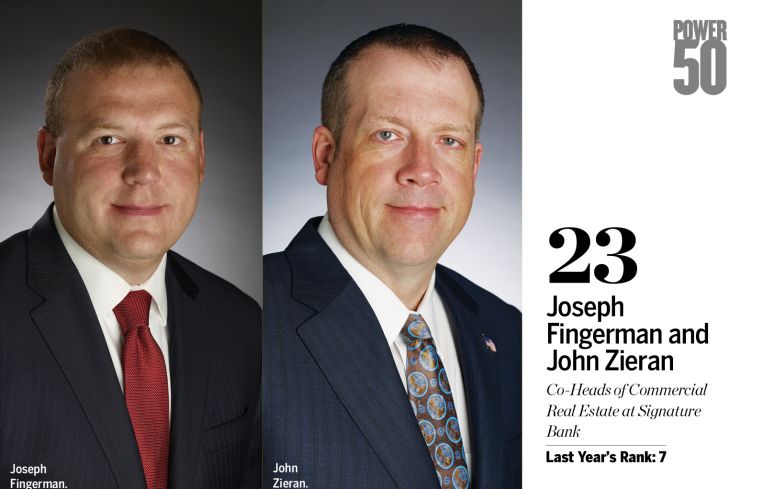

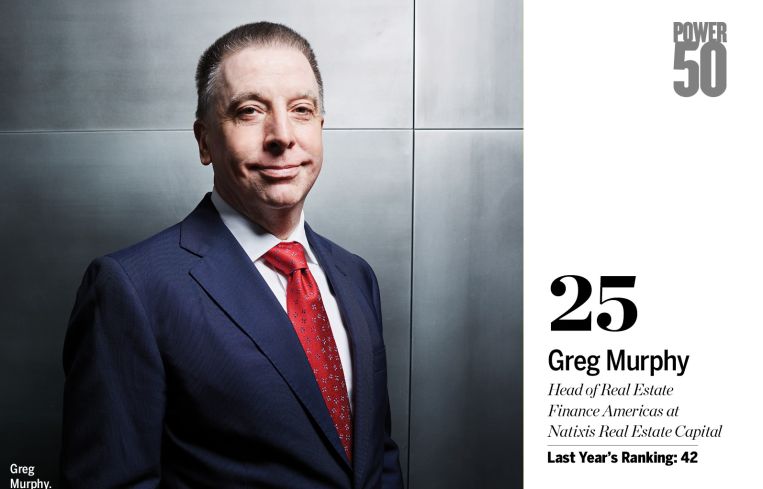


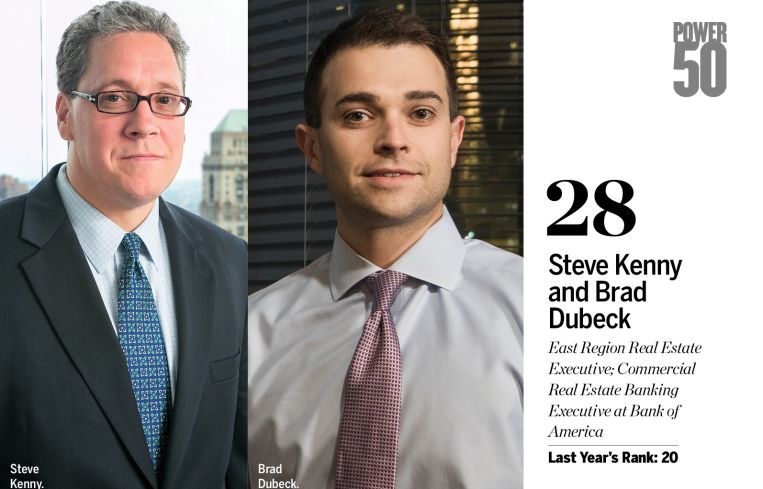

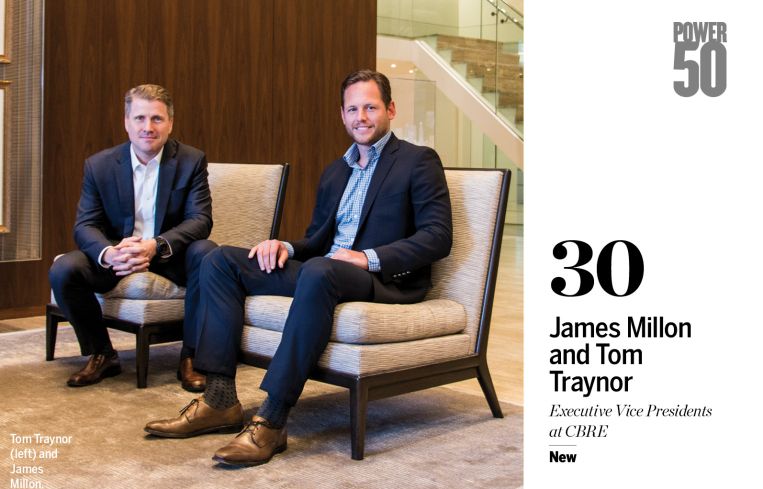





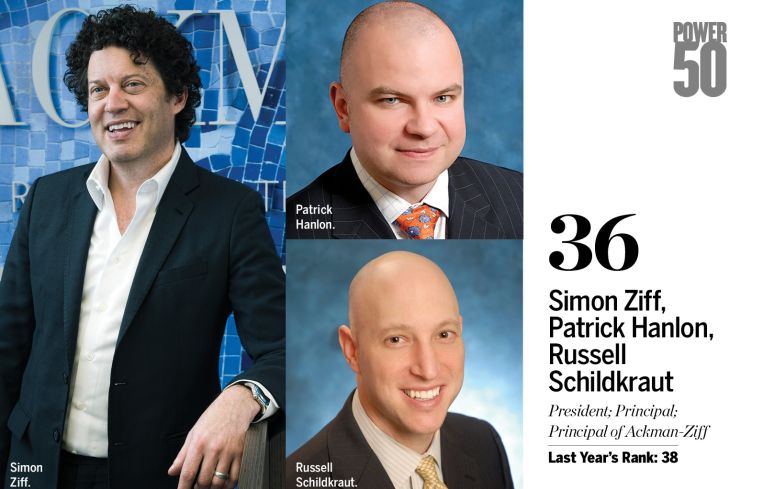


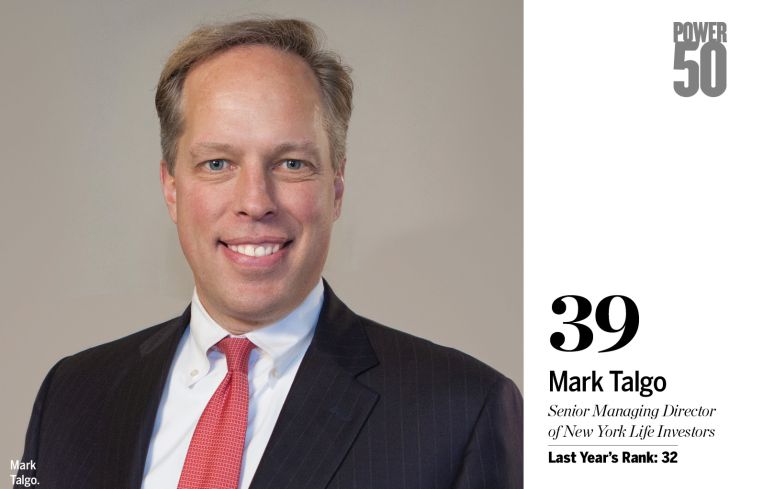
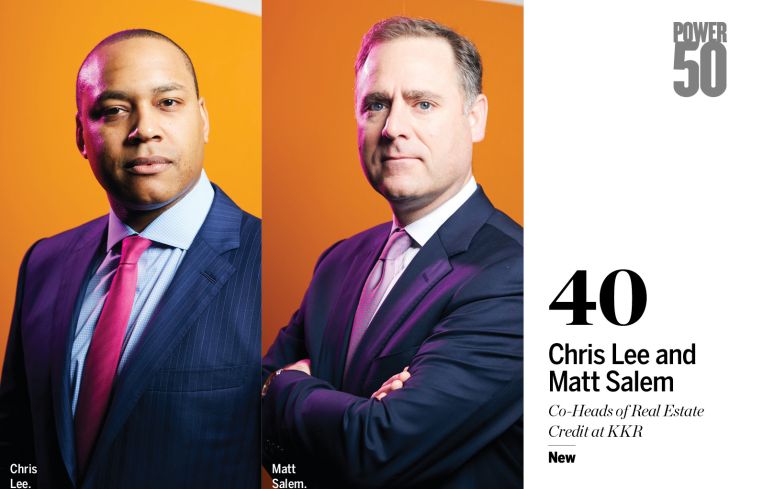

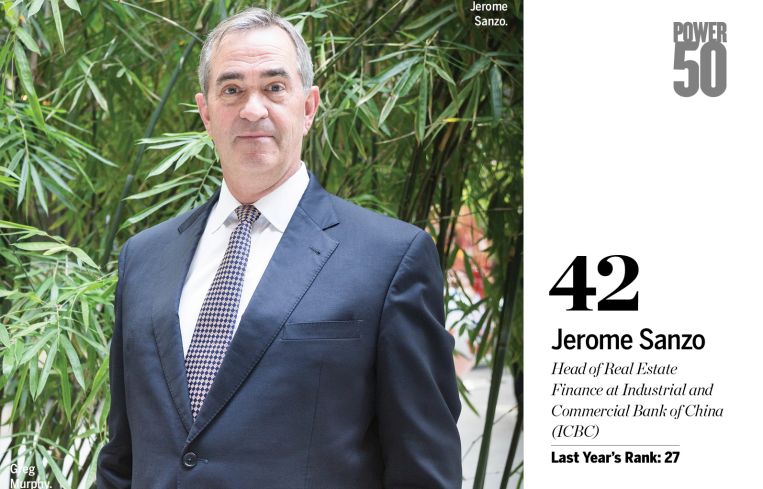
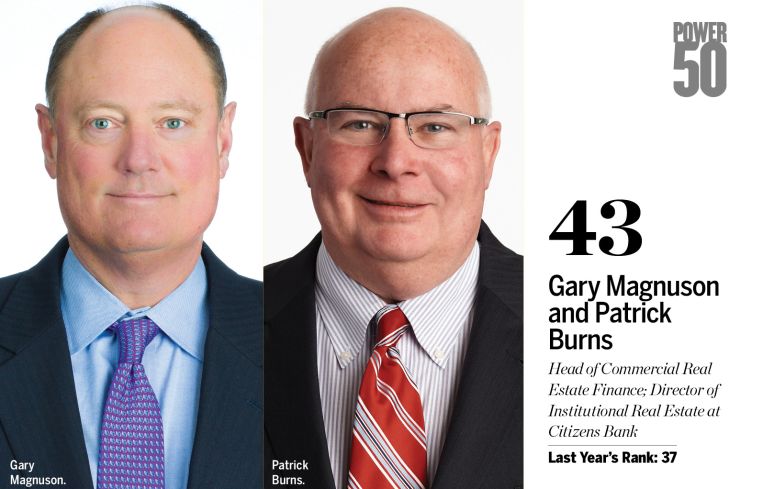

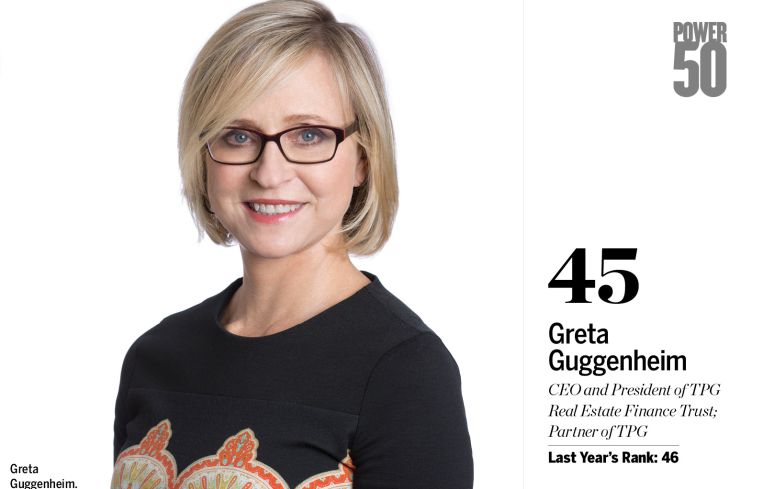
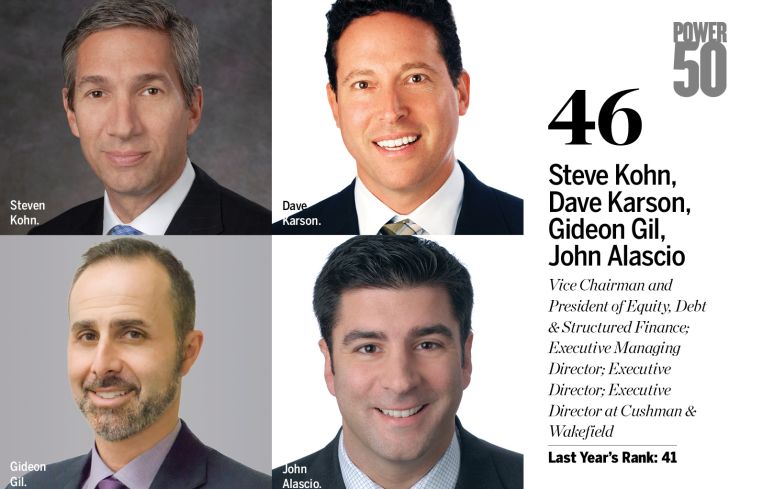
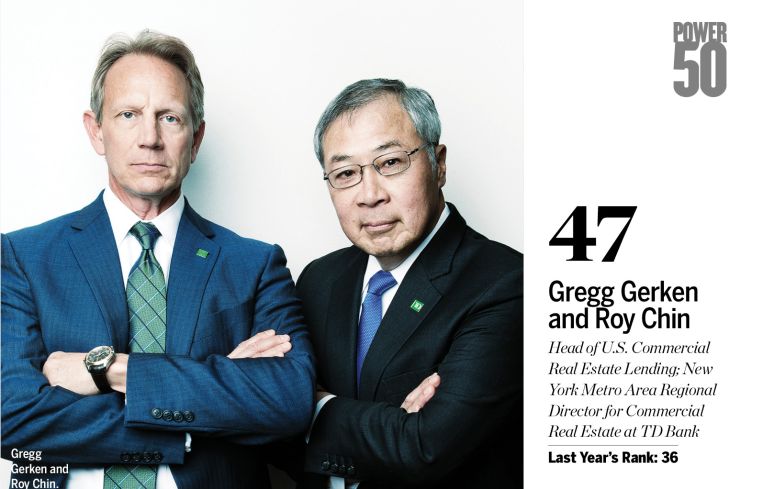

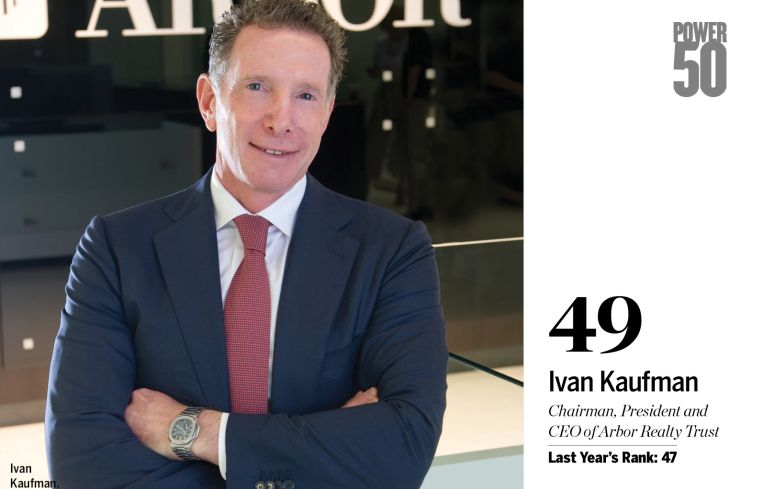

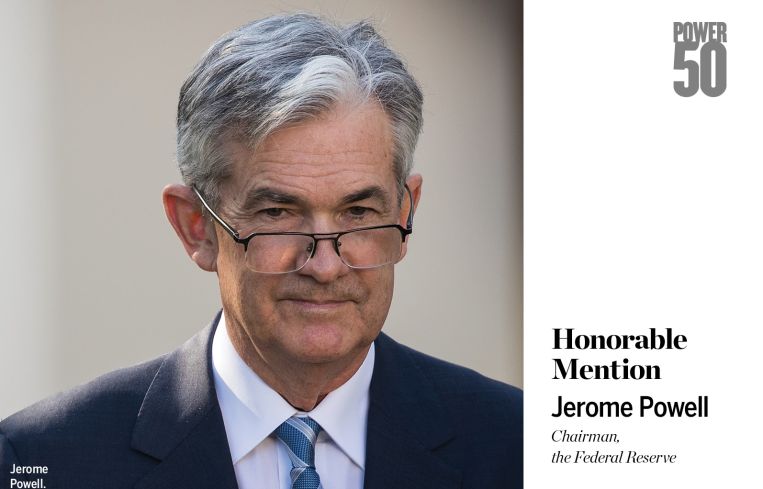
With even the industry’s top lenders battling it out for every deal—bank against debt fund, CMBS shop against life insurer—never has there been a more competitive year in American commercial real estate finance than 2017
“We were doing head-to-head combat every day,” as UBS’ Chris LaBianca, this year’s No. 31 honoree, put it. That made it trickier than ever before for our survey of the battlefield to rank the most exemplary victors—especially given our desire to take a broader nationwide perspective this time around.
This fresh outlook widened the field like never before. As a result, a painstaking dive into the companies behind the big-number deals—as well as due consideration to fearsome feats of entrepreneurship among some of the field’s newest entrants—went into crowning our champions of real estate deal-making. Volumes were up nearly across the board, creating a dog-eat-dog environment where firms had to sprint ahead merely to stay in place among our ranks.
In that context, the performance of some of our dynamic newbies rings all the more impressive. Lotus Capital, Faisal Ashraf’s year-old startup, expanded its debt-advisory reach to three continents and launched a new loan sale distribution platform, landing with a splash for its first year on the list in the No. 41 spot.
KKR’s debt business is off to the races, already going blow for blow with stalwarts like Blackstone and TPG. And CBRE’s Tom Traynor and James Millon turned in a stellar debut performance we couldn’t ignore, arranging $5.1 billion in debt in just their first eight months on the job.
In the world of securitized mortgages, the era of risk retention opened more space between the haves and the have-nots, pushing the most aggressive CMBS shops into some of our top spots. Fueled by eye-popping single-asset deals, those firms claimed 2017’s most exciting trophy asset financings all to themselves.
And the formidable Freddie Mac and Fannie Mae each surpassed their own high-water marks, producing record volumes that affirmed their places at the forefront of America’s multifamily market. Their wake propelled some of our honorees’ impressive leaps this year, like Walker & Dunlop’s jump to the No. 19 slot, vaulting 30 places from last year.
Finally, we made sure to tip our hats to the market’s envelope-pushers, outfits like Bank of the Ozarks (No. 17), who has charged boldly but astutely into the forbidding territory of construction lending, and Starwood (No.4) whose multicylinder approach continues to impress.
It’s that brand of dynamism—shared in different ways by all our honorees—that writes the stories that fill our pages all year long.
1. Doug Mazer and Kara McShane
Head of Real Estate Capital Markets; Head of Commercial Real Estate Capital Markets and Finance at Wells Fargo
Last Year’s Rank: 11
Wells Fargo’s Doug Mazer and Kara McShane battled their way to the top of our most competitive list in recent memory on the sheer strength of the eye-watering numbers that tell the story of their record-setting 2017.
Ninety-six transactions that added up to $71 billion—a 23 percent increase over 2016. Lead or co-lead lender on 71 transactions totaling $52.7 billion—good for a 71 percent yearly increase. The top bookrunner in the ascendant market for collateralized loan obligations. First-ranking issuer of Freddie Mac commercial mortgage-backed securities for the fourth straight year by volume, and the sixth straight year by deal count. Upsizings and modifications worth another $13 billion. All of which rolled in to support revenue growth nearly 25 percent higher than last year’s rake.
“We were hitting on all cylinders,” McShane said, remembering that she’d never expected a year of this magnitude as the calendar turned. “I certainly didn’t anticipate the volume we achieved, the growth that we experienced in our securitizations. If you asked me to predict it, I would not have predicted that.”
Mazer, whose team saw remarkable 88 percent year-over-year growth in commercial mortgage-backed securities, tips his hat to a brisk trade in interest-rate-protected loans destined for securitization that supported a roaring trade for the San Francisco-based international bank. “Clearly the big needle-mover was in the CMBS floating-rate space,” Mazer said. “You have to start there. Conduit issuance and fixed-rate issuance were pretty flat.”
On his team’s way to snagging the top spot among CMBS lenders by loan count for the sixth straight year, a handful of bicoastal landmark deals propelled the effort, including a $500 million loan on Vornado Realty Trust’s 330 Madison Avenue, a $300 million loan on Macerich’s Santa Monica Place in the Los Angeles area, and a co-originated $2.3 billion financing on the General Motors Building in Midtown.
Granted, not all news was good news for Wells Fargo last year. Fallout from the bank’s account-fraud scandal continued to haunt the institution’s reputation among consumer banking clients, and this February, a regulatory order from the Federal Reserve barred the bank from any overall growth until further notice.
But in a missive to investors, the bank opined that by curtailing its activities in areas like short-term trading and bank deposits, customer-facing areas like commercial real estate shouldn’t notice any effects.
That flexibility could give McShane and Mazer’s group the runway it needs to go all in on collateralized loans, a sector that rocketed up significantly last year.
“I think you’ll see a really active CLO pipeline,” McShane said. “Our goals are to continue to grow our business, and from where I sit, it’s shaping up.”—Matt Grossman
2. Michael Nash, Stephen Plavin, Jonathan Pollack and Tim Johnson
Co-Founder and Chairman of Blackstone Real Estate Debt Strategies; CEO of Blackstone Mortgage Trust; Global Head of Blackstone Real Estate Debt Strategies; Senior Managing Director at Blackstone Real Estate Debt Strategies
Last Year’s Rank: 4
“2017 was a busier year for us,” said Jonathan Pollack, the global head of Blackstone Real Estate Debt Strategies. “The advantage we have as a platform is that we have scale of capital, we have $4-plus billion private equity fund and we also have a $3.5 billion market cap REIT that has $11 billion of balance sheet assets. At that kind of scale we can look at pretty much any deal that comes to market.”
But if you have a big boat, why fish for minnows when you can catch some marlins.
“We tend to try to focus on larger deals because there's less competition at that scale, more than anything that's what drove how busy we were last year,” Pollack said.
Across BXMT and BREDS the private equity giant lent $9.1 billion, a significant increase from $6.7 billion in 2016l. BXMT’s $4.8 billion total was a 37 percent increase on 2016.
“It was not only the size and scale of deals, but we were also relatively diverse from a geography standpoint,” Tim Johnson, a senior managing director at Blackstone Real Estate Debt Strategies said. “We did deals inside the U.S., up and down the Eastern seaboard, we did a lot in Hawaii and also some big transactions on the West Coast.”
Highlights for the dynamo team include a $900 million loan on a Northern Virginia office portfolio. Blackstone teamed up with Goldman Sachs to securitize the $500 million senior portion of the loan in the Rosslyn Portfolio Trust 2017-TRUST commercial mortgage-backed securities transaction. The deal is collateralized by three Class-A office buildings and four class-B office buildings in the Rosslyn district of Arlington, Va.
“The themes for us were accessing capital markets and doing larger scale transactions,” Pollack said. “After being in business for eight years we have many repeat clients, and Tim and the team do an amazing job.”—Cathy Cunningham
3. Al Brooks
Head of J.P. Morgan Chase Commercial Real Estate
New
Previous incarnations of Commercial Observer’s Power 50 list have included J.P. Morgan Chase’s Chad Tredway and Greg Reimers—a pair of real estate finance power players who lead commercial lending and real estate banking on the East Coast. But taking a broader national view this year (and to coincide with the launch of our weekly newsletter covering real estate in Los Angeles), we thought it was high time to recognize Southern California-based Al Brooks, the firm’s top executive for commercial real estate from coast to coast.
Given that he’s responsible for a $100 billion portfolio and annual originations that consistently track double-digits billions, the industry veteran has a rightful place in our top 10. His group was responsible for about $28 billion in commercial real estate originations last year with a total of $102 billion in outstanding loans—a figure that climbed 9 percent from 2016.
Brooks explained that 2017 was a year that exemplified that no loan was too large—or small—for his team to tackle.
“We’re most proud of [the fact that] we bank everything from an individual investor all the way up to the largest real estate companies in the country,” Brooks said, adding that a renewed focus on technology infrastructure was a personal theme for the year. “We’ve been fully committed to being as digital as possible, and we want to do that more. It’s driven costs down, and we can pass that on to our clients.”
Of course, that just goes toward supporting the bread-and-butter work for J.P. Morgan: executing on behemoth deals. Highlight ledger entries last year included the financings of Pioneer Natural Resources’ new 1.1-million-square-foot headquarters in Irving, Texas; Trammel Crow’s construction of Amazon distribution facilities in Denver, Portland, Ore., and Troutdale, Ore.; and funding for real estate mogul Jay Paul’s development of a pair of office towers in Sunnyvale, Calif., totaling 701,000 square feet.
That geographic diversity is nothing new for the global bank.
“From our perspective, we follow our clients,” Brooks said. “As their business needs evolve, so do our solutions and services.”
And although originations dipped a bit last year from 2016 levels, Brooks reported that things are back on track thus far in 2018. “It’s a good year,” he reported. “Our pipelines are up a bit from where they were. But it’s still a highly competitive environment.”—M.G.
4. Jeff DiModica and Dennis Schuh
President; Chief Originations Officer at Starwood Property Trust
Last Year's Rank: 14
Starwood Property Trust’s multicylinder approach is, well, firing on all cylinders.
“We’re transforming the way people should be thinking about this business,” Jeff DiModica said. “We’re building a better mousetrap, and that’s the only way to compete.”
Starwood’s debt originations increased to $7.5 billion last year, up from $6.4 billion in 2016.
But, pushing capital out the door isn’t Starwood’s primary goal. It’s playing the long game, carefully selecting transactions and focusing on its credit profile—a game it evidently plays pretty artfully, given that it hasn’t taken a loss in nine years.
“We do about 4 percent of the loans we spend time on, and only by saying no to 96 do we know that we’re getting four we really like,” DiModica said. “Some [lenders] may lower their credit thresholds in order to get volume up. We’d rather sit on cash if we don’t see great opportunities.”
Some of the opportunities it did like include a $250 million redevelopment loan for 700 K Street in Washington, D.C., and a $280 million ground-up construction loan to Hudson Companies for 280 Cadman Plaza in Brooklyn Heights (Starwood provided $200 million and Related Companies put in $80 million).
Construction loans made up one-third of Starwood’s debt activity in 2017, with the lender finding opportunities with solid sponsors in good markets, Dennis Schuh said. Further diversifying its book, the lender also widened its lens to make loans below the $100 million mark.
One key way that Starwood differentiated itself from the herd last year was in its issuance of unsecured bonds ($1.7 billion over the past 15 months). Its bond issuance in January has the tightest spread since the financial crisis and the second-tightest spread in the history of the high-yield market. “This gives us great flexibility to do things that other firms can’t,” DiModica said. “There are no assets or product types that we can’t finance.”
DiModica added, “The right side of our balance sheet is what really differentiates us and why we’ve been able to increase our lending today. It’s a financing advantage on a global scale.”
“If you look at what we do across our large-loan lending business, our fixed-rate conduit lending business, our investor and servicing segment business where we’re investing in CMBS, what we’re doing in residential non-Qualified Mortgage loans, we have a very dynamic real estate investment vehicle,” Schuh said. “There’s nobody who puts that all under one roof the way that we do.”—C.C.
5. Brian Baker
Global Head of Commercial Mortgages at J.P. Morgan Securities
Last Year's Rank: 9
“J.P. Morgan continued to grow as a firm and expand its real estate activities in 2017, transacting with a diverse group of clients,” said Brian Baker, whose team originated a whopping $18 billion in loans last year, a $2 billion increase from the year prior.
“The business here is very broad,” he added. “We’ll do the smaller fixed-rate loans that we usually exit in the CMBS market through securitization, but run the gamut through to the larger, more complicated loans—for example, development loans. We have the balance sheet capability and the talent to work through very complex situations.”
Baker runs a multifaceted business. Although his group issued $12 billion in CMBS across 48 deals—and was the No. 2 issuer last year—it also lends in whole loan form, meeting clients’ varying needs along the way.
Notable transactions the lender participated in include a $1.67 billion financing of American Dream, a 2.8-million-square-foot experiential mall and entertainment development in Meadowlands, N.J.; the $500 million financing of the old main post office in Chicago, a 2.4-million-square-foot office renovation; a $1.074 billion financing of the Stonemont office portfolio—a portfolio of 95 office, industrial and retail properties totaling 6.8 million square feet across 20 states—and a $650 million financing of 1568 Broadway, a 468-key hotel slated for redevelopment to a mixed-use property in Midtown.
Another much-talked-about deal was the bank’s $900 million construction loan for Extell Development Company’s 1.2-million-square-foot Central Park Tower on West 57th Street. “It falls into the ‘big and complicated’ category,” Baker said. “It’s a super tower, and we’re working with a client who is an expert in the space. The complexity of a deal like this one is intellectually challenging. We were able to show the client a solution, and the property required a lender who could work through the complexity of the deal.”
Of the heightened deal competition in the market, Baker said, “We’re happy to compete and have plenty of advantages that make us a formidable competitor.”—C.C.
6. James Flaum
Global Head of Commercial Real Estate Lending at Morgan Stanley
Last Year's Rank: 13
Last year may have been a high-water mark for competition in commercial real estate lending, but for big banks like Morgan Stanley, a spot at the top of the food chain helped them stay decidedly above the fray.
“Our business is less impacted by private equity lenders and [the deals] they tend to do,” James Flaum said. “We don’t run into them as much.”
That measure of insulation from middle-markets trench warfare helped Morgan Stanley on its way to a healthy bump in origination volumes last year as its total loans in the United States rose by about 14 percent to $16 billion from $14 billion in 2016. Its securitization business surged as well by 60 percent to $9 billion in CMBS activity from $5.6 billion the year prior.
Part of that success flowed from Morgan Stanley’s readiness to do business in a red-hot loan product type that had been dormant in recent years.
“I think the biggest theme for 2017 was the comeback in the floating-rate securitization market,” Flaum said. “Most of the single-asset, single-borrower [deals] were really floating rate. This was driven by investor demand, and the expectation that interest rates are going up.”
One single-asset, single-borrower deal—although a loan that closed with a fixed rate—was the source of the biggest headline of the year for Flaum’s team: a $2.3 billion refinance of the GM Building in Midtown with a 10-year term at 3.43 percent. Other eye-catching transactions for Morgan Stanley’s CRE team in 2017 included a $2.6 billion CMBS financing on a pair of Blackstone hotel portfolios as well as the bank’s $850 million refinancing of Lower Manhattan’s One Liberty Plaza in August.
As the first quarter of 2018 winds down, Flaum said he expects continued strength for the year with the caveat that the industry could always be roiled by a monetary policy surprise.
“Will growth in net operating income keep up with any cap rate expansion that may occur because of higher interest rates?” Flaum said he is asking himself. “If growth keeps up with cap rate expansion, prices will stay flat. That’s what everyone’s focused on for the year. It feels like it will be pretty steady for 2018.”—M.G.
7. Paul Vanderslice, David Bouton and Joseph Dyckman
Co-Heads of U.S. CMBS at Citigroup
Last Year's Rank: 12
Citigroup completed 45 CMBS deals in 2017, up from 26 deals in 2016. While market volume was up 17 percent from the previous year ($89 billion from $76 billion), Citi’s increased 33 percent to $8 billion from $6 billion. The bank also increased its activity in conduit deals ($4.1 billion) and single-seller deals ($3.9 billion).
The bank was the canary in the coal mine in leading the first conduit risk retention deal of 2017—the $1.4 billion CGCMT 2017-CD3 transaction. “It was kind of fun,” Paul Vanderslice said of being the industry pioneer in this particular kind of transaction. The deal was the biggest deal of the year and done as an “L” structure with KKR holding the risk. “Nobody had ever done an L structure, so we didn’t have any documents to copy and had to negotiate the first documents.”
Vanderslice said he expected the overall market volume increase, given the wall of maturities coupled with low interest rates. And when it came to the individual CMBS shops’ activity, size mattered.
“I’d say we benefited in being a big bank,” Vanderslice said. “Between risk retention and investors requiring a couple of major dealers on shelves, the bigger you are, you tend to get more business. Anyone who holds their own should grow with the market, and we grew with the market.”
In addition to being part of the $1.2 billion CMBS loan on 280 Park Avenue, transaction, highlights include a $955 million acquisition loan for Blackstone’s purchase of International Market Centers from Bain Capital Private Equity and Oaktree Capital and a $1.8 billion financing package for Blackstone on the Cosmopolitan of Las Vegas hotel and casino.
“Size favored the CMBS market,” Vanderslice said. “The GM Building, The Cosmopolitan Las Vegas, the Caesars Las Vegas refinancing...who else could have done those deals except the CMBS market?”—C.C.
8. Matt Borstein and Ed Adler
Head of Global Commercial Real Estate; Head of U.S. Origination at Deutsche Bank
Last Year's Rank: 3
Deutsche Bank saw a slight uptick in transaction volume last year, issuing $9.95 billion in CMBS across 29 deals, compared with $9.74 billion via 25 deals in 2016. Its market share, however, declined to 10.4 percent from 12.8 percent.
Officials at the bank weren’t able to chat with Commercial Observer for the list, but Deutsche Bank certainly made its fair share of headlines.
In August 2017, Deutsche teamed up with Goldman Sachs, Citi Real Estate Funding and Barclays Bank to provide $1.075 billion to Vornado Realty Trust and SL Green Realty Corp. for the refinancing of the roughly 1.3-million-square-foot office building at 280 Park Avenue. In November, the bank, along with HSBC, provided an $800 million, six-year, floating-rate loan to Fosun International for the refinancing of the 2.1-million-square-foot office tower at 28 Liberty Street.
The company also joined with Goldman Sachs and Morgan Stanley last May to provide $760 million to Crown Acquisitions to refinance the commercial properties that make up the Olympic Tower at 645 Fifth Avenue plus three nearby properties. The loan consolidates a previous $250 million Deutsche loan from 2012 and a new $510 million mortgage the trio provided. Deutsche also helped shaped a significant aspect of what will be New York City’s future with a $271 million loan package in July to Vornado and Related Companies to fund an early portion of the Moynihan Train Hall project, which will include 700,000 square feet of office and retail space, and is expected to be completed by 2022.
Deutsche Bank is off to the races this year, with several major loans announced in January. Those deals include a $176 million loan to Savanna for the development of Vandewater—a 32-story, 170-unit condominium at 525 West 122nd Street in Morningside Heights—and a $308 loan million to the El-Ad Group and Silverstein Properties to refinance the condominium at One West End, part of the seven-building Riverside Center complex.—Larry Getlen
9. Warren de Haan, Boyd Fellows, Chris Tokarski and Stew Ward
Managing Partners at ACORE Capital
Last Year's Rank: 10
“We launched the business three years ago and had a plan to be one of the true leaders in the unregulated private lending space in commercial real estate,” Boyd Fellows said. “That was really the goal.”
Goal accomplished. The young private lender’s originations topped $5 billion last year, matching 2016’s figure.
“In 2016 we got off to the races then in 2017 the world changed—there was a lot more competition and countless new entrants—but it actually ended up being very similar to 2016,” Fellows said. “We were able to validate our leadership position with another very big execution in an even more competitive environment.”
Warren de Haan added, “The hallmark of the year was proving to the market that we are a dominant player in terms of total transaction volume. The suite of products that ACORE has transcends every single part of the capital stack and every need of our borrowers. We really are a full-service lender and that puts us in a position to continue to grow.”
ACORE’s 72 deals last year include a $150 million loan on 10 Jay Street in Brooklyn—a 10-story office conversion project along the Dumbo waterfront—for Glacier Global Partners and Triangle Assets; a $131.7 million loan for the ground-up construction of AMCAL Swensen’s The Graduate—a 19-story student housing building in San Jose, Calif.; and a $121.24 million first mortgage and mezzanine loan for the purchase and renovation of 311 West Monroe, an office building in Chicago’s West Loop area.
ACORE has originated over $10 billion in debt in just over two years, and 37 percent of those loans have been repeat borrower transactions. “We can provide full service, from origination through seamless underwriting, through asset management,” de Haan said. “The culture of ACORE permeates all the way through the organization, so clients know they can borrower very well-priced capital with flexible terms as well as great customer service. That provides a great experience for a borrower up and down the curve.”
ACORE ended 2017 with its busiest quarter to date, originating $2.1 billion across 30 loans. A hard act to follow but maybe not for ACORE. So far, 2018’s deal pipeline is surpassing last year’s on all metrics, de Haan said. Stay tuned!—C.C.
10. Ralph Herzka and Aaron Birnbaum
Chairman and CEO; Executive Vice President at Meridian Capital Group
Last Year's Rank: 6
For last year’s list, Ralph Herzka told Commercial Observer that 2016 was a “frenetic year of fast-paced finance.”
It would be difficult to characterize any given Meridian Capital-style year any differently, being that the company can be expected to trump any competitor with its deal count, which reached $32.4 billion across 3,072 transactions in 2017, although down just a tick from the $35 billion volume reported in 2016. It also closed $1 billion in investment sales.
“The environment was fast paced and highly competitive,” Herzka said via email. “New York City saw a decline in overall sales activity, which impacted acquisition financing volume as well. Toward year-end and into early 2018, we have observed a material pickup in volume which is always great to see.”
Meridian’s Abe Hirsch and Zev Karpel arranged $1.4 billion in acquisition financing for the Beacon Portfolio, a 25-property multifamily portfolio—totaling a combined 9,677 residential units—throughout the Washington, D.C., metro area, Pennsylvania, Maryland, Illinois, Massachusetts and New Jersey. The financing was comprised of a combination of Freddie Mac fixed- and floating-rate debt—sourced through Berkadia—as well as five-year, fixed-rate, balance sheet financing provided by New York Community Bank.
In December, the firm secured a $500 million construction loan from J.P. Morgan Chase to finance New York-based 601W Co.’s planned redevelopment of the Old Chicago Main Post Office—a location the city of Chicago offered up as a potential location for Amazon’s second offices—into an office property. The construction loan was one of the largest loans secured in the history of the city’s real estate industry, the Chicago Tribune reported at the time of the financing.
That month, Meridian also arranged a $360 million package for the Wolfson Group to refinance the 35-story, 835,651-square-foot office building at One State Street Plaza in the Financial District. The refinance also included the leasehold interest in air rights associated with RFR Holding’s 17 State Street, also in Lower Manhattan.—Mack Burke
11. Alan Wiener
Group Head of Wells Fargo Multifamily Multifamily
Last Year's Rank: 2
It’s hard to think about Wells Fargo and not think Alan Wiener.
The bank’s multifamily production remained relatively flat at $14.4 billion from approximately $14.5 billion in 2016 as it weathered a storm caused by an increase in competition from debt funds and alternative lenders, an unpredictable interest rate environment and a challenging tax landscape.
Wiener’s group was involved in high-profile multifamily deals in New York City at a time when its multifamily lending volume dipped as low as 24 percent year-on-year in the third quarter of 2017, according to a third-quarter multifamily report from Ariel Property Advisors.
The team was very active in the affordable housing space, making 16 affordable housing loans in New York and aggregating $760 million for 2,726 combined units. They also scooped up $400 million in tax credits on 11 different properties, totaling 2,076 units. “I think we did some fascinating deals,” Wiener said.
The largest deal produced by the San Francisco-based lending giant was in June 2017 when it dished out a combined $714 million to finance Brookfield’s Urban America Pool, which includes five Upper Manhattan properties—3333 Broadway; River Crossing at 1940 First Avenue; The Heritage at 1309 Fifth Avenue; The Miles at 1990 Lexington Avenue; and The Parker at 1894 Lexington Avenue—and 2,959 apartment units.
For 2018, “we’re pulling back on construction—we have to,” Wiener said. “And that’s on the Class A properties. On the affordable side, its not limited because there’s no market risk. There’s huge demand, and that’s where [New York City] puts in a lot of subsidy, and the city and state have robust programs for it.
“I’m anticipating rate rises until market absorption heats up on the rental side,” he added. “We’re going to be careful in what we do. We’re not going to buy land that’s too expensive, and with us pulling back and developers pulling back, you’re going to see less in the short term [within the next year] but not on the affordable side.“—M.B.
12. Grant Frankel, Philip McKnight and Ken Ziebelman
Managing Directors at Eastdil Secured
New
With $57.1 billion in originations in 2017—up from $41.1 billion in 2016—Eastdil Secured undoubtedly left its mark with several high-profile transactions.
With such a large footprint and offices across the globe and in every major U.S. market, these three senior Eastdil officials stress the importance of teamwork and how it translates to a seamless execution.
“We generally follow our clients, and then we’ll work with our local experts,” Grant Frankel said. “For example, if we’re doing a deal in Boston, my colleagues [in New York City] are a part of the team. We make sure our clients have a seamless process, and it’s important that we know how they work.”
With around 50 debt professionals at the ready, the firm is producing close to $1 billion per professional. The firm’s average deal size is $150 million.
The firm’s pedigree, coupled with its process and execution, had it involved in some of 2017’s most notable transactions. One such deal was the firm’s arrangement of $2.3 billion to refinance Boston Properties’ General Motors Building, the renowned 50-story, 1.8-million-square-foot office tower at 767 Fifth Avenue, which houses the iconic Apple store below grade.
The 10-year, 3.4 percent fixed-rate loan replaced a roughly $1.6 billion package of senior and mezzanine debt—which carried a 6 percent interest rate—that was set to expire in October 2017. It marked one of the largest loans ever dispersed on a single asset. “That was a deal that we rate-locked and committed in the CMBS market, so to have a commitment to a rate on a loan of that size was pretty good from our perspective,” Frankel said.
Eastdil also arranged $250 million in floating-rate financing to refinance Midtown Equities, Rockwood Capital and HK Organization’s Empire Stores—a 443,000-square-foot, mixed-use development at 55 Water Street, along Brooklyn’s East River waterfront in Dumbo. The loan has a term of five years, including extension options.
With the markets overflowing with lenders and participants, Eastdil is seeing endless opportunity for growth and advancement. “The competition on the lending side is great,” Philip McKnight said. “Every day there are new entrants in the markets, whether foreign or domestic, who are there to finance a variety of projects—from the construction space to the mezzanine space…We’re one of the first places capital stops. We really pride ourselves on bringing new lenders to clients. We can talk to our colleagues in L.A. or San Francisco or Washington, D.C., and discuss new capital sources.
“Our job is to fully vet and hunt for capital,” he added. “We also have a team in Asia, and we work hand-in-hand with them to discuss some of the market entrants and have a behind-the-scenes view as well.”—M.B.
13. David Brickman, John Cannon, Stephen Johnson and David Leopold
Head of Multifamily Business; Senior Vice President of Production and Sales; Vice President of Small Balance Loan Business; Vice President of Targeted Affordable Sales and Investments at Freddie Mac
Last Year's Rank: 24
Freddie Mac logged a blockbuster campaign in 2017 with its multifamily group financing a record-setting $73.2 billion in loan purchases and guarantees, good for nearly a 30 percent increase over 2016, when it turned over $56.8 billion.
But that wasn’t a sure bet last January, David Brickman recalled.
“At the beginning of the year, we were a little concerned,” he admitted. “After the election, interest rates ran up 100 basis points, and there was some uncertainty. The first quarter…was actually very slow.”
But after investors and developers collected their wits and examined the economy’s fundamentals, business turned around in a hurry.
“We’re proud to have done some of the biggest deals in the market,” Brickman explained, noting that the agency twice executed deals larger than $2 billion: Greystar Real Estate’s acquisition of Monogram Residential Trust and Starwood Capital’s purchase of Milestone Apartments.
“On all fronts, we’re trying to push our ability to serve every part of the market and how we can raise capital,” Brickman said. “We were the largest ‘securitizer’ in terms of multifamily, and [we use that position] to better serve the needs of affordable and workplace housing.”
Success in that area came after a concerted effort to leverage government housing programs even in an uncertain political landscape, David Leopold said.
“With the specter of tax reform looming, the market [for low-income housing tax credit deals] was dramatically off,” Leopold recounted. “So we made a concerted effort to overcome the decline in the tax-equity subsidy space. We executed more portfolio trades, and we also focused specifically on mixed-income transactions.”
The bank also recorded an impressive showing in small-balance financings—deals that sit between $1 million and $7.5 million.
“That really is core workforce housing,” Stephen Johnson said. Last year, the bank’s small-balance business grew to $7.8 billion from $4.6 billion the year before—a 70 percent improvement.
“The most important thing to us and our business is squarely workforce housing,” Johnson said. “[Otherwise], I don’t think we would have invested in the space.”—M.G.
14. Jeffery Hayward and Michele Evans
Executive Vice President of Multifamily; Senior Vice President and COO of Multifamily at Fannie Mae
Last Year's Rank: 25
It was the second straight record-setting year for Fannie Mae Multifamily, which finished 2017 with more than $67 billion in financings under its belt. Those deals—including debt that supported more than three-quarters of a million apartments—provided the firepower for the agency to issue $65.4 billion in mortgage-backed securities. And as if that wasn’t enough good news for Fannie’s residential team to toast during its designated underwriting and servicing program’s 30th anniversary, the group topped the $12 billion mark in its guaranteed multifamily structures product.
Talk about a parade of big numbers.
Still, if those headlines left Jeffery Hayward giddy, he managed to play it cool, emphasizing that the agency hadn’t gone dumpster-diving for new material.
“The size of the market did not surprise us,” said Hayward, who marked his own 30th anniversary at the firm last year. “Lenders like doing a lot of quality business with us, and [what] we did in 2017 [was] as good as what we did in 2016.”
And all that’s not to mention how Fannie’s green financing program—which backs eco-friendly upgrades developers make to multifamily properties—grew by 800 percent. The agency’s success in green financing gave Michele Evans the most pride out of all her team’s 2017 accomplishments because the renovations it funded at apartment complexes around the country helped the environment as well as landlords and tenants’ bottom lines.
“When we look at the numbers, we saved enough water to fill 42 billion glasses,” Evans said. Other projects conserved enough electricity to power as many as 80 million cellphones for a year.
The good work doesn’t stop there, as Fannie Mae also notched its best-ever results in the affordable-housing space. That represents work that defines the government-sponsored entity’s spirit best, Hayward said.
“The people who come to work at Fannie Mae are really into affordable housing,” Hayward said. “If you talk to a person about why they work here, affordable housing will be their answer.”—M.G.
15. Raymond Qiao
Chief Lending Officer at Bank of China
Last Year's Rank: 1
Other Chinese investment institutions have seen their overseas activities handcuffed by political considerations in recent months, but the Bank of China still had the firepower to generate plenty of headline-worthy lending in 2017.
Start with the $518 million mortgage loan that the bank sealed in December on Industry City, the 5.7-million-square-foot mixed-use project on Brooklyn’s waterfront. (The bank joined with SL Green Realty Corp. on the deal.) That behemoth financing was preceded by two no-less-noteworthy Manhattan transactions: a pair of $300 million loans supporting 50 Hudson Yards and 5 Times Square—each part of separate multilender megadeals with combined values of more than $2.25 billion.
But the bank’s achievements weren’t limited to New York City, as it took the lead on two high-profile deals on the left coast, too. A short-term $389 million financing from Bank of China provided pre-stabilization financing for a luxury rental project in the Century City section of Los Angeles, and the bank was also the lead construction lender, to the tune of $375 million, on Uber’s new headquarters at the site of the Golden State Warriors’ new arena in San Francisco’s Mission Bay neighborhood.
Though the bank thrived, Raymond Qiao admitted being somewhat taken aback at just how competitive real estate financing grew last year. “Commercial real estate is no longer an alternative asset class,” he said. “As a result, what surprised us about 2017 was the amount of capital available to be deployed for debt investments throughout the entire debt stack—not just the senior tranches.”
Government moves that seemed to rebuke Chinese firms that were overextended abroad—and fears of an escalating trade war over new U.S. tariffs—have many observers bearish on Chinese lenders’ role in U.S. commercial real estate. But Qiao said Bank of China watchers shouldn’t expect the institution to flee the New York City scene anytime soon.
“Our commitment to the U.S. is evidenced by the New York branch’s flagship 475,000-square-foot headquarters near Bryant Park and our Chicago and Los Angeles branches’ recent office expansion,” Qiao said, noting that 90 percent of its U.S.-based employees are local hires. “Bank of China is very much committed to the U.S. for the long term, supporting U.S. jobs and corporate responsibility.”—M.G.
16. David Lehman
Global Head of Real Estate at Goldman Sachs
Last Year's Rank: 22
The past 12 months have been replete with big changes for Goldman Sachs, from David Solomon’s rise to become the sole presumptive candidate to succeed Lloyd Blankfein’s chairmanship to the launch of Marcus, the bank’s new platform for low-balance consumer lending and savings.
But it was business as usual on the real estate front, where David Lehman continues to control the global bank’s real estate finance business. The New York-based executive’s team turned in an especially strong year on the CMBS front, snagging the top spot on the league tables with $12.4 billion in CMBS issuance over 32 deals. That’s good for a remarkable 60 percent year-over-year increase from last year, according to Commercial Mortgage Alert.
At the same time, however, Goldman’s origination business dried up significantly, shrinking to $4.1 billion from $6.8 billion in 2016. Lehman, a 1999 graduate of Washington and Lee University, presided over some supersized loans last year. The bank led a $1.2 billion refinancing on One Worldwide Plaza in September, playing a key role in a 10-year loan on the mixed-use tower at 825 Eighth Avenue in Midtown. Earlier in the year, Goldman was part of a troika of lenders who combined to loan $760 million on another Midtown office refinancing secured by Olympic Tower, at 641 Fifth Avenue.
And in November, the bank provided $262.2 million to Lightstone Group to back its refresh of the Marriott Moxy Hotel at 485 Seventh Avenue in the Garment District.—M.G.
17. Brannon Hamblen, Greg Newman, Tucker Hughes and Richard Smith
COO of Real Estate Specialties Group; Managing Director of Originations in Southeast U.S.; Managing Director of Originations in Central and Western U.S.; Managing Director of Originations in Northeast U.S. at Bank of the Ozarks
Last Year's Rank: 31
It’s one thing to chance a debt investment on the refinancing of a fully occupied, Class-A Manhattan skyscraper—or even to originate a mortgage on a value-add multifamily play in a suburban workforce housing market.
Staking your money in a transaction where the cash-flow-ready property-to-be is no more than a gleam in the eyes of an architect and a developer: That’s a different order of business entirely.
Boldly stepping where so many well-established lenders fear to tread, Bank of the Ozarks didn’t miss a step this year in the high-risk, high-reward realm of construction lending, churning through $10.5 billion in loans, compared with $8.24 billion in 2016 and $5.63 billion in 2015. Not too shabby, eh?
Although shares in the bank tumbled 11 percent on the July 2017 day when Chief Lending Officer Dan Thomas abruptly announced his resignation, Rich Smith Brannon Hamblen, Greg Newman and Tucker Hughes finished the year strong.
The bank transacted across the country, closing construction loans right, left and center.
In May, Rescore Property Corp. scored a cool $100 million from the bank to proceed with construction of its 386-unit Hollywood apartment building known as the Rise; also in May, the lender took us to church, lending $90 million in financing for Extell Development’s condominium development on the former site of the Park Avenue Christian Church’s rectory at 1010 Park Avenue; in July it lent $218 million for the construction of the 516-key, 4.5-star JW Marriott Bonnet Creek hotel; and in September, it provided a $170 million mortgage (along with Arbor Commercial Mortgage and Melody Capital Partners) for The Chetrit Group’s mixed-use hotel and retail development at 255 West 34th Street.—C.C and M.G.
18. Jeff Fastov
Senior Managing Director at Square Mile Capital Management
Last Year's Rank: 23
Hey, man, don’t be such a square! Unless you want to rack up a cool $3.5 billion in originations in one year, that is.
Once again, Jeff Fastov and his team at Square Mile Capital Management outdid themselves, increasing their lending activity in 2017 compared with the previous year (when they originated $3.3 billion).
“I would say that things are going according to plan,” Fastov said of the firm’s continued success. “The alternative lender universe is responding to a real need for capital that not only responds to advance rates beyond where banks go but also provides the service and creativity that the market so desperately wants.”
The past year was quite the year for the nonbank lender as it flexed its significant muscle across the U.S. Deal highlights include a $133 million acquisition and redevelopment loan to Invesco Real Estate and SteelWave for The Press—the 420,000-square-foot creative office property redevelopment of a former Los Angeles Times printing facility in Costa Mesa, Calif.; a $150 million construction loan to Tavros Development Partners and Charney Construction for The Dime mixed-use development in Williamsburg, Brooklyn; and a $118 million loan for Moinian Group’s Renaissance Tower, a 1.7-million-square-foot office building in Downtown Dallas.
“Because we are an owner-developer of properties that are changing use,” Fastov said of The Press deal, “it gave us the confidence to be a lender on the same property type. I think the L.A. Times building is a similar story in that change of use.”
He added, “It’s an example where the execution of the business plan is the key. You have SteelWave and Invesco in that deal and we have high confidence that they’ll execute at a very high level. Interestingly, they are just as focused on who their lender is and that lender being able to appreciate a business plan that will maximize the property’s value. So, it kind of helps that we’re in the business as well.”
As this list goes to press, Square Mile is in the midst of closing a $250 million construction loan for the Essex Crossing mixed-use project on the Lower East Side on behalf of sponsors Goldman Sachs, Taconic Investment Partners, BFC Partners and L +M Development Partners.
“It’s a very exciting project with a who’s who of sponsorship,” Fastov said. “It’s also a project that’s going to completely transform its neighborhood. It’s of such a scale that it will become a place in and of itself.”
When it comes to the trench warfare for each deal, Fastov isn’t losing any beauty sleep.
“That’s where our relationships and history with borrowers really makes a difference, because they’ll come back to the people they trust. If you perform you see repeat business, and that’s the best business. So we’re starting to enjoy the benefits of our franchise in that way.”—C.C.
19. Willy Walker
Chairman and CEO of Walker & Dunlop
Last Year's Rank: 48
What hasn’t Willy Walker done with this company in the commercial real estate arena since he gripped the reins and took it public in December 2010?
For the ninth consecutive year, Walker & Dunlop eclipsed its prior-year transaction volume, hitting $27.9 billion in 2017, up from $19.3 billion in 2016—a 45 percent climb on the year. The company’s mortgage servicing portfolio reached a colossal $75 billion, up from $50 billion just two years earlier, while its investment sales practice also climbed to $3 billion in 2017 from $1.52 billion in its 2015 inception year. And, Walker saw revenues climb 24 percent year-over-year to $711.9 million.
On Sept. 20, W&D announced its largest batch of financing in company history—$1.9 billion in fixed- and floating-rate Freddie Mac loans delivered to Greystar for the acquisition of multifamily properties in major metropolitan centers throughout the country.
“You don’t get invited to that party unless you’ve created a brand that people associate with success and as one of the best commercial real estate firms in the U.S.,” Walker said.
Walker also mentioned that his firm worked with other industry groups in December to help carve out a provision in the Senate’s Tax Cuts and Jobs Act and exempt mortgage servicers from being hit with upfront taxes on anticipated servicing income; under the original law, it would’ve changed the treatment of this deferred income and servicers would have been taxed once the servicing right was created.
“I think we overpunch our weight on general policy with our work with GSEs [government-sponsored enterprises] and with our mortgage banking practice and having our hands in regulatory issues that many other firms cannot access because of our D.C. location,” Walker said.
W&D has lived on making moves where other firms choose not to play. The Bethesda, Md.-based firm had just one office when Walker joined the company in 2003 and now with over 25 offices across the country and a $1.83 billion market cap, the company’s stock reached its highest level since it hit the market when it touched $55.81 per share on Oct. 18, 2017.
“We’ve seen opportunities to continue to grow with and through cycles,” Walker said. “There are no reasons to stop our recruiting and acquisition efforts. Competition in 2016 was standing still, while we were aggressively expanding, and because we didn’t get caught as a deer in the headlights, we kept investing. As a result, that paid off brilliantly in 2017.”
By 2020, the company wants to have reached $1 billion in annual revenues, $30 billion to $35 billion in annual loan originations and $8 billion to $10 billion in investment sales volume; it wants to expand its servicing portfolio to $100 billion and grow its asset management platform to $10 billion.
Just another day at the office.—M.B.
20. Robert Merck and Gary Otten
Head of Real Estate and Agricultural Finance; Head of Real Estate Debt Strategies at MetLife
Last Year's Rank: 16
Although MetLife’s commercial real estate loan origination volume dipped slightly to $14 billion last year from a record high $15 billion in 2016—and from a then-record $14.3 billion in 2015—it executed $16 billion in commercial real estate transactions globally. That cements the insurance behemoth as our lists most powerful life company.
The company attributed the slight drop to its shift in strategy to offer smaller, more frequent debt investment opportunities to its growing list of third-party clients.
“The business is robust,” Gary Otten said. “We basically executed in accordance with our plan. In expanding our third-party asset management platform, we actually did a record number of transactions. We expanded our capital sources, which requires more transactions, but in slightly smaller dollar volumes—still in the $90 [million] to $100 million range.”
In November, MetLife shelled out large sums of capital on numerous properties throughout the country, including when it paired with TH Real Estate to lend $200 million of a $400 million mortgage loan on the 1.6-million-square-foot Freehold Raceway Mall in Freehold, N.J.
“It was a very strong year again for us,” Robert Merck said. “We did a significant number of deals and were able to supply mortgage opportunities for our general account and for the third-party institutional clients in our mortgage program. The broader real estate market here in the U.S. continues to see a decent amount of supply, and the demand was well matched.”
A month later, the life company followed up the Freehold loan with $143.5 million in debt on the Orlando CBD Collection, a portfolio of three high-rise office buildings in downtown Orlando, Fla. It also originated $335 million on Warner Center Towers, a six-building office complex in Los Angeles, and provided $60 million on the Graham Industrial Portfolio, a collection of 10 industrial properties scattered throughout the southeast.
“It was also a year where I was surprised by the demand in floating-rate loans,” Otten said. “I was surprised because interest rates are up and treasuries yields are up. I expected people to try to lock in rates, but there wasn’t much of a trend there at all, which for us is unusual, being a life company. We’re doing about 50 percent of our business in the floating-rate space.”
They didn’t stop there. Globally, MetLife’s real estate platform, which includes origination and asset management capabilities, saw an 9.1 percent increase from last year to $76.4 billion in global equity assets managed.—M.B.
21. David Durning and Marcia Diaz
President and CEO; Global Head of Originations at PGIM Real Estate Finance
Last Year's Rank: 17
PGIM Real Estate Finance saw a slight jump in its origination number in 2017 to $14.8 billion from $13.9 billion in 2016.
“In a year where transaction volume was down, we managed to slightly increase originations domestically and have an increase year-over-year related to our international activities,” David Durning said. “Our participation in riding the wave of multifamily financings was a record year for us as well.”
This activity was headlined by PGIM setting record-highs in lending on multifamily properties and logistics centers in 2017, according to Durning. The company also poured $1.5 billion into international markets such as Australia, Canada, Japan, the U.K. and other countries within the Euro area.
“The big story for us was that we’ve always been a strong lender to industrial properties—we’ve liked industrial for a long period of time—but last year we did over one third of our business in logistical properties, which is a historic record-high for us,” Durning said. PGIM offers a variety of loans, including preferred equity and mezzanine pieces as well as agency products. For last year’s list, PGIM said it began offering financing on more core-plus assets with value-add potential, in which it invested roughly $184 million in 2017.
“We’re off to a very good start [in our core-plus lending],” Marcia Diaz said. “We started building momentum in the fourth quarter of [2017] and that has carried over into 2018. Our target this year is $1 billion, and with deals closed and signed up we’re already on target to do that, so we feel really good.”
One notable transaction the company announced in November included two loans totaling $275 million that it provided to refinance Trinity Place Phases 1 and 3 in downtown San Francisco. The 10-year refinancing package on the apartment complex, when combined with an already in-place $73 million loan on Trinity Place Phase 2, put PGIM’s exposure to the property at $348 million. Trinity Place Phases 1, 2 and 3 were completed in 2009, 2013 and 2017, respectively.—C.C. and M.B.
22. Gino Martocci and Peter D’Arcy
Co-Head of Commercial Banking and Executive Vice President; Regional President of New York City and Long Island and Head of the Commercial Real Estate segment at M&T Bank
Last Year's Rank: 19
Gino Martocci and Peter D’Arcy’s astute deal-making has helped them navigate this currently crowded market of real estate lenders as they’ve followed their clients—many of whom have borrowed from the bank for 15 to 40 years, according to Martocci—to where they’re looking to unload equity.
The bank reported financing just over $11 billion worth of business on the year, down from approximately $13 billion in 2016. But, that didn’t keep M&T out of some of New York’s most attractive deals on the year.
“The market in general was slower, but we had a very good year,” D’Arcy said. “We were active during a period that included a pullback from competitors on certain products.”
In one of its first major deals last year, M&T lent $120 million to Silverstein Properties in February to facilitate the firm’s purchase of a majority stake in the Movielab building at 619 West 54th Street from Taconic Partners. Taconic kept a 10 percent stake in the 325,000-square-foot, 10-story property, The New York Post first reported at the time.
In September, the bank provided $250 million in floating-rate financing in the form of a land loan to a development trio—Midtown Equities, Rockwood Capital and HK Organization—to refinance Empire Stores, a 443,000-square-foot, mixed-use development at 55 Water Street, along Brooklyn’s East River waterfront in Dumbo. The loan was arranged by Eastdil Secured and had a term of five years, including extension options.
“Empire Stores was one of the earlier large redevelopments of retail and office in Brooklyn,” D’Arcy said. “We’re very proud of the project, and we think it’s wonderful. We’re happy to have played a role in it.”
In November, M&T paired with Natixis as co-lead arrangers to lend a $195 million senior loan to landlords SL Green Realty Corp. and PGIM to refinance and help complete the lease up of Tower 46, the 347,694-square-foot office building at 55 West 46th Street. It was a floating-rate, interest only loan with a three-year initial term and three, one-year extensions.
Martocci said: “I think staying close to your clients and understanding where they think the market is going and where they’re making their equity investments and why [is what’s important for us].”—M.B.
23. Joseph Fingerman and John Zieran
Co-Heads of Commercial Real Estate at Signature Bank
Last Year's Rank: 7
George Klett’s retirement late last year marked the end of an era for Signature Bank, which had thrived under his leadership for 10 years. Prudence and conscientiousness were the watchwords during the industry veteran’s tenure, who bragged of having never lost even a dollar on any of the 7,000 loans he originated during his career.
Now that two of Klett’s longtime lieutenants, Joseph Fingerman and John Zieran, have taken the helm, the theme is continuity above all else. “There haven’t been any wholesale changes,” Zieran said. “We’re still working with the people we always worked with,” referring to the rest of Signature’s team of about 20 who work in commercial real estate originations.
It’s that roster of familiar faces that keeps longtime customers from straying far, the New York-based executives explained. “[Clients] come back for the single point of contact,” Fingerman said. “They’re able to come to John and me because these are relationships that span decades. They’ve been borrowing from the team for years.”
“We take the execution risk out of the equation,” Zieran added. “There are no surprises.”
The same could be said of Signature’s lending results. The bank always seems to notch dependably impressive loan figures considering its business rarely takes it beyond the tri-state area. Last year, total debt funded was down about 25 percent for the team in an increasingly crowded financing market. But Signature still cleared $4.4 billion in lending: not bad for a home-town shop that consistently ranks among major financial journals’ lists of the most trustworthy financial institutions.
As to whether to expect a resurgence or a continued slide in 2018, the bank’s new leaders are probing their tea leaves for any signs of where interest rates will go next.
“If the rates move up too fast, that will be a problem,” Fingerman said. “Hopefully, it will be slow, steady rate increases. Buyers and sellers will start to see eye to eye, and transaction volumes will pick up.”—M.G.
24. James Carpenter and John Adams
Senior Executive Vice President and Chief Lending Officer; First Senior Vice President, Chief Administrative and Senior Lending Officer at New York Community Bank
Last Year's Rank: 8
New York Community Bank originated $6.4 billion in commercial real estate financing in 2017 with $3.7 billion of that secured by property within the five boroughs. NYCB’s main focus was on multifamily lending, which represented 80 percent of its total New York City lending in 2017, and the bank anticipates continued emphasis on rent-regulated multifamily in 2018.
Significant deals for the bank in 2017 included the refinancing of a package of nine multifamily Bronx properties containing 529 apartments with an aggregate loan amount of $70 million; the refinancing of 12 multifamily properties totaling 1,062 units and two commercial properties consisting of five retail spaces and 20 offices located in Manhattan, Queens and the Bronx, for $174 million; and the refinancing of a portfolio of 11 multifamily properties comprised of 534 apartments and five offices in the Bronx, Queens, and Manhattan with an aggregate loan amount of $96.8 million. All of these were structured as individual loans on a five-year fixed-rate term.
The bank also refinanced a $92 million multifamily portfolio with 763 units in Brooklyn and Manhattan. The 10-year financing was structured as individual loans with a rate fixed for the initial three years with fixed adjustments in years four and six.—L.G.
25. Greg Murphy
Head of Real Estate Finance Americas at Natixis Real Estate Capital
Last Year's Rank: 42
When it comes to lending, some banks just have that je ne sais quoi.
“We had a very good year,” Greg Murphy said.
No doubt. Last year Natixis Real Estate Capital more than doubled its $3.2 billion 2016 origination volume to $7.52 billion, across 105 loans and 47 states. That total includes $2.84 billion in securitized loans—making Natixis the number 10 contributor to U.S. deals—and $2.88 billion in syndicated loans, including senior mortgages, B-notes, mezzanine loans and preferred equity.
Murphy’s saw a significant increase in floating-rate lending, the volume mirroring the market’s overall increase in floating-rate CMBS. “What we tried to do was find places where we could add the most value to our clients and our investors,” Murphy explained. “We were able to match up the right capital with the right deals, whether it was on the bank syndication side or finding buyers of higher-yielding B-notes and mezz, both domestically and internationally.”
Stand-out transactions include a $480 million construction loan for EchelonSeaport, a 1.3-million-square-foot mixed-use project in Boston’s Seaport Square; a $266 million acquisition loan for Amazon’s Bellevue, Wash., office; a $475 million loan on RFR Realty’s 285 Madison Avenue (Natixis’ share was $270 million) near Grand Central Terminal; and a $359 million loan to Ivanhoe Cambridge for 85 Broad Street in FiDi.
“We were able to create the first CMBS green bonds on 85 Broad Street,” Murphy said. “That was a very exciting deal. It was complex and we sold subordinated debt, securitized some of it in a conduit deal and also had some standalone rake bonds that we were able to make into green bonds.”
It’s an initiative that Natixis is championing. “We have a bank-wide effort to find ways to do more in the green space,” Murphy said. “We’re looking for opportunities to improve our green profile.”—C.C.
26. Larry Kravetz and Eric Wu
Head of CMBS Finance; Head of Originations at Barclays
Last Year's Rank: 39
“We had a great year last year,” Larry Kravetz said. “We did $3.5 billion in 2016, and last year we almost doubled that and did $6.5 billion. We clicked on all cylinders.”
The majority of that volume was CMBS. On the conduit side Barclays’ volume was up about 25 percent—outperforming the market, which was flat overall—and the bank led or co-led nine standalone deals.
In New York one of the most notable transactions was the $430 million fixed-rate financing of 225 and 233 Park Avenue South, Buzzfeed’s location as well as the marketing headquarters for Facebook. “The owner did a phenomenal job of turning what was a B-building and turning it into a very attractive asset,” Kravetz said. “There were lots of moving parts and it was a complicated deal. All of our competitors wanted a piece, and we won on structure and pricing.”
“We exited the loan in a number of conduit transactions,” Wu added. “What we did is we sold a big part of the loan as a mezzanine loan. So there was a $250 million senior mortgage and a $180 million subordinate piece. A lot of competitors were looking at it as a standalone deal, and we thought this gave us an advantage.”
The standalone deals Barclays led include a $712 million refinance of the historic Hotel del Coronado hotel in Miami on behalf of Blackstone Group and a $540 million loan on the JW Marriott Grande Lakes and the Ritz-Carlton Grande Lakes in Florida, also on behalf of Blackstone.
Barclays showed its muscle in taking down part of the $2.2 billion refinance of Caesars Palace Las Vegas. The complex financing involved five lenders and took a year to put together. “The deal was part of Caesars coming out of bankruptcy, and a number of corporate financings had to be sequenced with it. There was a long period of advisory work to get them to the point where they had the right financing structure to emerge from bankruptcy,” Kravetz said.
“One thing that CMBS in general and Barclays in particular does well is that we’re comfortable taking down size and we can write big checks,” Wu said. “Plus, we get universally strong reviews about our ability to execute.”
The bank is in the process of its first balance sheet closing—and has a goal of $2 billion in balance sheet deals this year—which will add a fourth leg to its conduit, large loan and warehouse lending businesses. We also should expect to see more activity in CRE CLOs and in Freddie Mac K-series securitizations. Look out!—C.C.
27. David Schonbraun
Co-Chief Investment Officer at SL Green Realty Corp.
Last Year's Rank: 21
It’s not easy being green, once sang Kermit. But, David Schonbraun is proving him wrong.
“Last year was a great year for us,” David Schonbraun said. “We produced north of $210 million in revenues for the company and we did about $1.5 billion in gross originations.”
Schonbraun also led SL Green’s side of its acquisition of a 49 percent stake in Worldwide Plaza (along with RXR). His team’s bread and butter is New York City assets. “We’re not focused on doing as much originations as possible to grow the book as big as possible,” he said. “We try to pick the best assets and best returns to keep our portfolio around the $2.2 billion mark, and within there we optimize.”
SL Green deploys a barbell strategy to lending, often anchoring the bottom of the capital stack—as it did in HNA’s acquisition of 245 Park Avenue—and improving pricing.
It bought a $250 million existing mortgage on Sitt Asset Management’s embattled Two Herald Square, whose foreclosure auction is pending. Then there’s the $170 million mortgage on Normandy Real Estate Partners’ acquisition and redevelopment of ABC Carpet & Home’s headquarters at 888 Broadway.
“We went from buying a mezzanine loan on a 100-percent-leased building to a whole loan on an existing asset to doing a new redevelopment loan,” Schonbraun said, “so we kind of play all throughout the capital stack.”
And let’s not forget the upsized $647 million loan on Industry City on Brooklyn’s waterfront [together with Bank of China], on behalf of a group of developers led by Belvedere Capital and Jamestown.—C.C.
28. Steve Kenny and Brad Dubeck
East Region Real Estate Executive; Commercial Real Estate Banking Executive at Bank of America
Last Year's Rank: 20
Bank of America inked solid commercial real estate business in 2017, originating more than $6.4 billion in CMBS. That strong performance was good for a 23 percent increase over the prior year, as the bank held steady with just under 7 percent market share among U.S. CMBS bookrunners.
But with heightened lending competition from private-equity upstarts and increasingly aggressive life insurers, the bank has had to run twice as fast just to stay in place.
“I think competition—fierce competition—has entered every corner of the industry,” Brad Dubeck said. “In the old days, lending was [a business] with structure and pricing power. Now, competition is everywhere. We were surprised how active the life insurance companies would be in the short-term lending space.”
Dubeck, who works alongside Steve Kenny, explained that the bank is constantly rebalancing its portfolio to maintain exposures in the sectors where it’s most bullish. With retail under threat from e-commerce, Bank of America has found itself steering clear of mildewed malls and shopping centers.
“Retail is a very small part of our origination portfolio,” Dubeck explained. “I can’t think of any large-scale retail transactions that were done last year.”
Instead, the bank has taken up a stronger interest in a booming trade in warehouse and distribution financing nationwide—again, thank e-commerce—as well as opportunities to lend against apartments.
“We’d like to do more industrial, and we’re also being very mindful of Class-A multifamily units around the country,” Dubeck said. “We have a very granular portfolio, and we want to keep the mix about the same.”—M.G.
29. Richard Mack and Peter Sotoloff
East Region Real Estate Executive; Commercial Real Estate Banking Executive at Bank of America
Last Year's Rank: 49
“Oh, the line forms on the right, babe. Now that Macky’s back in town.”
And Bobby Darin’s song, “Mack the Knife,” seems to hold strong in the case of Mack Real Estate Credit Strategies, which vaulted up the Power 50 list this year thanks to a stellar 2017. (Last year was its debut at no. 49.)
Mack went ahead and doubled its volume last year, racking up a smooth $4 billion in originations compared with $2 billion the previous year, with an average deal size of $200 million.
“It’s endemic of the opportunity and demand for our capital, but we’re not about volume, we’re about borrower relationships,” Peter Sotoloff said. “We saw a lot of really interesting situations on very high-quality real estate, and there were some very large transactions in there that are textbook for why we exist as a transitional lender.”
One of those large transactions was a $315 million construction and recapitalization of Penn-Florida Companies’ Via Mizner—a 2-million-square-foot mixed-use project in Boca Raton, Fla. comprised of five components: an 85-unit luxury condominium building; a 164-key hotel; a 366-unit apartment building; 60,000 square feet of retail space and a golf club.
“There were a lot of moving parts to the deal that most people aren’t equipped to get their arms around,” Sotoloff said.
New York property feathers in its cap include a $305 million construction loan for Lightstone Group’s 59-story condominium tower at 130 William Street in the Financial District, a $200 million bridge loan for Ceruzzi Properties’ development of 520 Fifth Avenue in Midtown and a $55 million acquisition loan for Meadow Partners’ 175 West 95th Street on the Upper West Side.
“For anything large and transitional there is still—in our view—limited competition,” Sotoloff said. “There’s still a very robust environment when you’re doing things of a large size in transitional lending.”
Mack is targeting $5 billion in originations in 2018, with $2.7 billion in closed and in-closing deals already under its belt. But, it maintains a thoughtful approach to lending. “We’re very selective,” Sotoloff said, “regarding who we’re transacting with and the markets we’re in.”—C.C.
30. James Millon and Tom Traynor
Executive Vice Presidents at CBRE
New
When James Millon and Tom Traynor joined CBRE from Deutsche Bank a little over a year ago they hit the ground running, sprinting even, arranging $5.1 billion in financings. Their first deal out of the gate was perhaps one of the year’s most talked-about: the $1.77 billion acquisition financing for HNA’s purchase of 245 Park Avenue. Talk about an impressive debut!
“It was a monster deal,” Millon said. “We worked on it for a very long time.”A monster, indeed, and second only to the financing of the General Motors Building in terms of size. (“The GM building comes around every 10 years, and unfortunately this was the year,” Traynor said and laughed.)
Traynor attributes the dynamic duo’s immediate success to three factors. “There’s the skillset and relationships we brought having been principals at an investment bank, CBRE plugging us into an amazing global platform and our ability to form partnerships with some of the players at CBRE—whether it’s Darcy Stacom and Bill Shanahan or the other investment sales teams around the country.”
Millon and Traynor also gave props to colleagues Ethan Gottlieb and Mark Finan for being instrumental in the team’s success.
Deal highlights for the dynamic duo include an $800 million, six-year floating-rate loan on Fosun’s 28 Liberty Street Downtown (Deutsche Bank and HSBC provided the refi) and Atlanta-based Stonemont Financial Group’s $1.3 billion acquisition financing for a portfolio of 100 retail, office and industrial properties across 20 states.
“The best part about this role is that we’re not on the other side of the table from our clients; we’re sitting on the same side, advising them [unlike before]. The second part is that it’s pretty entrepreneurial,” Traynor said.
“From a client perspective, we’ve seen it, done it and lived it—and many times with that client—so there’s a level of comfort there,” Millon said. “From a lenders’ perspective, we frankly weren’t sure what the lenders would think of us, but we problem-solve, we spot issues early and we address them. Lenders are juggling 20 deals at a time, so the more efficient you can make the process the better it is for them.” Along with speed of execution, the pair’s ability to dig deep on more complicated deals is becoming a calling card.
“Stonemont was 83 percent leverage with a lot of mezzanine, 245 Park was fixed-rate financing which is unusual, and 28 Liberty was Fosun’s first deal in the U.S., so they really needed an adviser,” Traynor said. “Certain deals lend themselves to quick executions, but we’re even better with the really hairy deals where the clients really need help.”
“We’re building something that didn’t exist at this massive organization; large loan institutional debt advisory,” Millon said. “So that’s been really fun even though it’s been a lot of hard work. But the good news is there’s a lot still to come and there’s a lot of room for growth.”—C.C.
32. Christopher LaBianca
Head of Commercial Mortgage Originations at UBS
Last Year's Rank: 34
“It was a good year,” Christopher LaBianca said. “It was challenging, certainly, on the CMBS side. There was a lot of trepidation at the beginning of the year with risk retention being implemented. But for us, it turned out to be a good thing because we were an issuer and the market favored lenders who were issuers or willing to use their balance sheet for a B-piece angle. The guys who were not doing that found themselves on the outside looking in.”
Indeed, UBS racked up $3 billion in total originations last year, completing 13 securitizations and issuing eight deals off its own shelf.
“As a year it was flat from the conduit perspective,” LaBianca said. “[As conduit issuers], we were all fighting against the banks to keep some of [these loans] in the conduit world. We were trying to keep our market [share in an] overall finance market that was still healthy.” Under LaBianca’s guidance, UBS also grew the bank’s contributions to CMBS last year to $2.5 million, about 2.5 percent higher than 2016’s level.
Increasingly aggressive ranks of lenders have forced him—and every other lender—to fight harder for each and every opportunity, in “head-to-head combat,” LaBianca said, but UBS held its own on the battlefield.
One of last year’s deal highlight was a joint $550 million refinancing with Natixis on Yorkshire and Lexington Towers, a pair of Upper East Side apartment buildings ,that rolled over three-year-old debt from Deutsche Bank.
This year, the bank is busy readying its balance sheet lending program, where it will be making traditional balance sheet loans and bridge loans on assets that are near stabilization.UBS hopes to use it as a feeder program for its CMBS program, LaBianca said.It has also been busy providing warehouse financing to CLO originators.—C.C.and M.G.
Head of Commercial Mortgage Originations at UBS
Last Year's Rank: 34
“It was a good year,” Christopher LaBianca said. “It was challenging, certainly, on the CMBS side. There was a lot of trepidation at the beginning of the year with risk retention being implemented. But for us, it turned out to be a good thing because we were an issuer and the market favored lenders who were issuers or willing to use their balance sheet for a B-piece angle. The guys who were not doing that found themselves on the outside looking in.”
Indeed, UBS racked up $3 billion in total originations last year, completing 13 securitizations and issuing eight deals off its own shelf.
“As a year it was flat from the conduit perspective,” LaBianca said. “[As conduit issuers], we were all fighting against the banks to keep some of [these loans] in the conduit world. We were trying to keep our market [share in an] overall finance market that was still healthy.” Under LaBianca’s guidance, UBS also grew the bank’s contributions to CMBS last year to $2.5 million, about 2.5 percent higher than 2016’s level.
Increasingly aggressive ranks of lenders have forced him—and every other lender—to fight harder for each and every opportunity, in “head-to-head combat,” LaBianca said, but UBS held its own on the battlefield.
One of last year’s deal highlight was a joint $550 million refinancing with Natixis on Yorkshire and Lexington Towers, a pair of Upper East Side apartment buildings ,that rolled over three-year-old debt from Deutsche Bank.
This year, the bank is busy readying its balance sheet lending program, where it will be making traditional balance sheet loans and bridge loans on assets that are near stabilization.UBS hopes to use it as a feeder program for its CMBS program, LaBianca said.It has also been busy providing warehouse financing to CLO originators.—C.C.and M.G.
32. Matthew Masso and Stefanos Arethas
Head of Commercial Real Estate Finance; Head of Commercial Real Estate Loan Origination at Credit Suisse
Last Year's Rank: 50
Last year marked Matt Masso and Stefanos Arethas’ first in new roles at the helm of commercial real estate finance for the Zurich-based Credit Suisse—and the pair hit the ground running.
“We started 2017 with me stepping into my seat and Stefanos stepping into the head of originations role, so we had to go out and reintroduce ourselves to the market,” explained Matt Masso. It was a smooth transition by all measures.
“Everything went very well in terms of volume, and we ended up doing $3.7 billion in conduit and single-borrower CMBS loans,” Masso said. “We didn’t do a conduit deal until June because we were starting from scratch in terms of our loan inventory, but then we did a deal every couple of months. That’s our plan: to continue to issue deals off our own shelf and be in the market fairly regularly.”
Arethas agreed, emphasizing how important it is to big CMBS borrowers that Credit Suisse was the bookrunner behind more than $3.1 billion in mortgage-backed securities last year—more than double its 2016 issuance figures.
“What caught us by surprise is just how competitive it was between CMBS lenders, particularly with regard to conduit deals,” Arethas said. “But, we continue to compete, and the number of active lenders in the space continues to decline from the 2015 highs. The market is really starting to value the execution and certainty of dealing with the issuer that is controlling the shelf.”
High points for the firm include the market leading structure undergirding their CSMC 2017-CHOP transaction, the first single-borrower CMBS issuance to include nonrated bonds instead of a carved out mezzanine loan.
“We decided it was a more efficient structure to put the entire mortgage into the trust and issue non-rated bonds out of a single borrower deal, having the risk retention at the bottom. That really opened up those bonds to a different investor base and every other dealer has since followed suit.”—C.C. and M.G.
33. Dustin Stolly and Jordan Roeschlaub
Vice Chairmen and Co-Heads of Debt and Structured Finance at Newmark Knight Frank
New
Dustin Stolly left his position as a managing director at JLL in May 2017 and two months later joined forces with Newmark Knight Frank’s Jordan Roeschlaub to head up the firm’s debt and structured finance division, forming one of the most talented and formidable debt arranging duos around.
In only a few months since uniting, Stolly, Roeschlaub and their NKF squad have banged out over $6.5 billion in originations, while almost tripling the size of the team from just under a half dozen investment banking professionals a year ago.
While Stolly and Roeschlaub are undoubtedly renowned in New York City commercial real estate circles, they play on a national level, and with a roughly $6 billion forward pipeline scheduled for the first half of 2018, they’re only going to get stronger.
“So when you think about [2018] versus last year, we’ve almost doubled in just this early stage of the year,” Stolly said. “A lot of that just has to do with us getting to know each other and how we work together. We take a very proactive, advisory approach to our clients.”
In June 2017, Roeschlaub led a team that secured for Orda Management a 10-year, fixed-rate loan of $430 million from Barclays to refinance two connected office buildings—spanning 675,000 square feet—at 225-233 Park Avenue South in Midtown South. The property is fully leased and houses Facebook and BuzzFeed, both with leases of roughly 190,000 square feet.
Fast-forward to November and the pair locked in $650 million from Blackstone for an 800-foot-tall, 58-story Tribeca condominium tower at 111 Murray Street. The trio of borrowers included Witkoff Group, Fisher Brothers and Howard Lorber’s New Valley Real Estate. The financing was drawn up, in part, as an inventory loan ahead of all currently in-contract units closing in the first quarter of 2018, as well as a takeout of the existing construction loan provided by M&T Bank, Deutsche Bank and Blackstone in July 2015.
“There’s significant liquidity in the markets, and a lot of new entrants,” Roeschlaub said. “There are always new groups showing up on the scene, and we’re making a very conscience effort to be in front of that and identify the best capital that’s out there for any given project or asset.”
To start 2018—not long after the Chinese government’s investment crackdown—they locked in $236.6 million from Royal Bank of Canada to finance Northwood Investors’ $305 million purchase of HNA Group’s 1180 Avenue of the Americas in Midtown.
And with a goal to expand their team as they grow their deal volume, they’re not done. Stay tuned.—M.B.
34. Aaron Appel, Keith Kurland, Adam Schwartz, Jonathan Schwartz
Vice Chairman; Managing Director; Executive Vice President; Managing Director at JLL
Last Year’s Rank: 26
Last year was a transitional one for Aaron Appel and his team at JLL, but even with that, the four-man team did $6 billion in originations last year. While slightly down from their 2016 totals of $6.5 billion, it still makes for a successful year that Appel believes is just the beginning of great things to come.
“We restructured our capital markets group in 2017 and are in the process of rebuilding our investment sales group,” he said. “I took control of the capital markets operation, and we’ve restructured our overall business to approach the market more collectively as a team. We’re using more of our firm’s total resources to try to service clients, providing capital market services, but also providing leasing services.”
Moinian Group hired JLL last October to handle leasing for its 3 Hudson Boulevard development at West 34th Street and 11th Avenue. “We were engaged by Moinian to capitalize 3 Hudson Boulevard, which we are in the process of doing,” Appel said, “but we’re also doing the leasing on that deal. So we’re making more of a concerted effort to provide a full scope of services for our clients, not just focus on one aspect of their business.”
Other significant deals for Appel in 2017 include brokering a $440 million construction loan for Icon Realty Management for mixed-use towers at 301 East 80th Street and 301 East 81st Street, both just off Second Avenue; a $221.25 million loan to an undisclosed client for a five-building office complex called Corporate Woods in Overland Park, Kan.; and a $250 million loan to SL Green Realty Corp. to refinance The Olivia, its rental building at 315 West 33rd Street between Eighth and Ninth Avenues.
With $3 billion in deals closing in the first few weeks of this year—Appel said the declining totals in 2017 were partially due to the timing of certain closings—Appel sees a bright year ahead for JLL in 2018.
“We’re a very young group,” he said, “so our business continues to grow every year. Our relationships continue to expand.”—L.G.
35. Robert Verrone and Christopher Herron
Principal; Managing Director at Iron Hound Management Company
Last Year’s Rank: 28
Iron Hound’s Robert Verrone and Christopher Herron continue to impress, racking up a cool $3.3 billion in closed transactions across loan restructurings and debt and equity business in 2017, down just slightly from their $3.8 billion total.
“It was a borrowers’ market and the debt markets were very robust with increased competition in the lending space,” Herron said. “We saw a lot of tightening in yield requirements from various lenders—banks, debt funds and nontraditional capital sources.”
Iron Hound follows its clients all over the country, and it certainly added to its national footprint this year, closing interesting deals nationwide.
Notable transactions include the much-talked-about $647 million Bank of China and SL Green Realty Corp. redevelopment loan for Brooklyn’s Industry City (upsized from $403 million in December) on behalf of an ownership group led by Belvedere Capital and Jamestown; a $218 million loan to refinance Chetrit Group’s multistate 56-property Empire Multifamily Portfolio (prior to Chetrit’s acquisition of the properties in 2015, Iron Hound spent three years restructuring the portfolio’s $317 million CMBS loan); and a $33 million CMBS loan on Hamilton Equity Partners’ acquisition of Capitol Center in South Carolina (Deutsche Bank was the lender).
Of the Capitol Center transaction, Herron said, “CMBS is always going to be effective and this deal shows the efficiency of the CMBS market.”
As for how 2018’s real estate market is faring, “I think that everybody expects rates to increase, but I think the economic signs still remain pretty strong for continued growth,” Herron said.—C.C.
36. Simon Ziff, Patrick Hanlon, Russell Schildkraut
President; Principal; Principal of Ackman-Ziff
Last Year’s Rank: 38
Ackman-Ziff held steady for the third consecutive year with a cool $5 billion in transactions.
The firm closed 80 transactions, 33 of which topped the $50 million mark (the highest percentage of overall transaction count for the firm since 2007).
Almost 20 percent of Ackman-Ziff’s business was dedicated to the construction lending side of the industry, and the company didn’t shy away from the hairier opportunities.
“The deals we work on require a lot of resources. They require a lot of human capital because of their complexity and the sheer size of the transactions,” Simon Ziff said. “We’re agnostic to outcome and sometimes pursuing multiple avenues of execution on a deal—it may be debt-mezz, might be debt-equity—and we have to keep the options open. We don’t pick an outcome and then go do it. We pick a deal then figure it out with our clients.”
Ackman-Ziff increased its market share in a decreasing market, Ziff said, adding “that’s going to continue this year, we’re working even harder.”
The brokerage has been closing deals across the U.S.—with Philadelphia and Washington, D.C. being the most active markets— as well as its hometown of New York City.
Two Big Apple highlights last year include a $117 million construction loan provided by Bank of the Ozarks for Rockpoint’s boutique office project at 412-419 West 14th Street in the Meatpacking District and a $115 million refinance of Gansevoort Hotel, also in the Meatpacking District. That loan was provided by L Star Capital.
Ackman-Ziff’s joint-venture equity practice has been off to the races recently. “It’s probably the busiest part of our business right now,” Ziff said. “We have some great assignments in Washington, D.C., Portland, [Ore.], and New York City. I think of that as the center of our business, even though that’s not where the majority of our fees are generated.”
Changes at Ackman-Ziff include the hiring of Evan Denner—the co-founder of merchant banking firm Lauderhill Partners—in January 2017 to expand its investment sales operation and the acquisition of RM Capital Management—a boutique commercial real estate investment and brokerage firm—last June.—C.C.
37. Rick Lyon and Ben Stacks
Executive Vice President and Head of Commercial Real Estate; Northeast Market Manager at Capital One
Last Year’s Rank: 29
Capital One saw its portfolio of loans slightly decrease to $26.1 billion last year from $26.5 billion in 2016, but that didn’t hold the bank back from expanding its reach.
The bank increased its activity in select major markets and regions such as in Boston, Texas and California and continued to build out its multifamily platform, according to Ben Stacks. He also mentioned that his northeast team’s activity in the New York metropolitan area directly reflected the increased and ongoing multifamily demand.
“[In 2018], I anticipate that across our commercial real estate business, we’ll be lending more for construction and multifamily while increasing our presence in California and Texas,” Stacks said in a prepared statement to CO. “We’ve made a lot of progress toward building a national multifamily platform and that effort will continue as well.”
Among a swath of deals Capital One delivered, one of its most notable on the year was a $145 million direct bond purchase to refinance 88 Leonard Street—Jamestown’s 21-story, roughly 396,000-square-foot rental building in Tribeca. Capital One’s Municipal Funding purchased $112.5 million in tax-exempt bonds and Capital One, N.A. purchased $32.5 million in taxable bonds that were then issued by the New York State Housing Finance Agency to finance the property.
In April, the bank also doled out $40 million to refinance 161 William Street, a 22-story, 201,222-square-foot, office building in Lower Manhattan—owned by Jack Resnick & Sons and the Ruben Companies. The 10-year loan replaced and modified a $35 million mortgage from Bear Stearns that was made in 2007 and securitized in the Morgan Stanley-sponsored MSC2007-T27 CMBS transaction.
Capital One also participated in transactions on industrial properties, including a $60 million loan to The Davis Companies to acquire 88 Black Falcon Avenue in Boston’s Seaport District. The property includes two three-story buildings that are adjoined and span a combined 376,000 square feet.
“When I arrived in 2008, our commercial real estate business held promise, but we were not a major player and were almost exclusively New York centric,” said Rick Lyon, who is retiring this year. “Today, while New York remains our most significant single market, we are national in scope in the majority of our businesses…I am very proud of everything we’ve accomplished during my time at Capital One.” Stacks expects Capital One will face increased competition from debt funds in 2018 and while other bank’s have softened a bit and slowed their construction lending, he’s confident in Capital One’s position in the space.
“We saw banks become more conservative with regard to construction lending,” Stacks said. “There is a lot happening in the world today, but despite factors such as rising interest rates and global uncertainty, we’re well positioned to offer clients a whole suite of options. We’re anticipating good things for the year ahead.”—M.B.
38. Stephen Rosenberg and Drew Fletcher
Chairman and CEO; President, Debt and Equity Advisory Group at Greystone & Co.
Last Year’s Rank: 33
Greystone excelled in several areas last year, but the bulk of its $9.5 billion in originations ($6.5 billion worth) came courtesy of its work with Freddie Mac and Fannie Mae, as it ended 2017 as the No. 1 Freddie Mac targeted affordable housing lender and the No. 2 Fannie Mae DUS producer for small loans.
“We are a leader in that business,” Stephen Rosenberg said, meaning for loans under $5 million. “I’m extremely proud that we have a special relationship with Fannie and Freddie. They feel we’re in business to protect them as well as our clients.”
But these special relationships are just one factor accounting for Greystone’s success in 2017, as the company has come up with innovative ways to better serve its clients.
“We deploy our own cash and balance sheet to support borrowers in a way that has differentiated us from the competition,” Rosenberg said. “We have a special situations group that is there for only one purpose—to meet the needs of our clients when the unexpected occurs. When [a client is] buying a property and an investor falls out at the 11th hour, we’ll lend them the capital, sometimes even personally, to let them close and find another investor. Or if a refinancing comes up short because there’s an unanticipated cash need, we use our special situations group to provide guarantees as well as capital to the clients. We’re not seeing anyone else doing that.”
Rosenberg’s goals for 2018 include a more aggressive push into California, and a larger effort to secure transactions over $500 million, like the $550 permanent Freddie Mac loan the company secured for The Moinian Group and SL Green Realty Corp. for the refinancing of the luxury rental building Sky Residences at 605 West 42nd Street, the largest single-tower residency building in the United States.
Rosenberg also attributes the company’s recent success to an ongoing technological advancement that provides them with strong competitive advantages. Between Greystone’s financial and technological innovations, he expects 2018 to be a big year for the company.
“We created an in-house software development group to support our businesses,” he said. “The end result is that we are creating systems that make our processes much smoother. Things that used to take four or five months now take a couple of weeks. It used to take 18 months handling new construction financing from HUD [U.S. Department of Housing and Urban Development]. Now it takes six months…The technology we invested in, which keeps improving, will make us the easiest lender to work with and work for.”—L.G.
39. Mark Talgo
Senior Managing Director of New York Life Investors
Last Year’s Rank: 32
In competitive times, New York Life Real Estate Investors has seen a consistent increase in business with $53 billion in assets under management in 2017, up from $50 billion the year before and $46 billion in 2015. Mark Talgo said the company did “about $10 billion in total investments. Within the commercial mortgage loan sleeve, it was about $5.5 billion, which was about a 20 percent increase year-over-year.”
Talgo said New York Life saw lots of activity in the multifamily and industrial spaces in 2017, “just because it was a very active market in those spaces.”
That included several large industrial pools including a $475 million secured loan for a 10 million square-foot, eight-state industrial portfolio of Class-A office product. The firm also financed a 3.7-million-square-foot, four-state portfolio of big bulk Class-A industrial space with a $220 million secured pool loan.
On the construction lending side, New York Life did an $87 million construction loan for a 12-story, 400-unit multi-family property currently under construction in Raleigh, N.C. For equity investments, Talgo mentioned the $127 million value-add acquisition of a 24-story multifamily property in Chicago, near the campus of Northwestern University, which will go through an extensive rehabilitation of its units, common areas and amenities.
The company also launched a series of new funds in 2017, including a $600 million investment vehicle focused on office investments in major U.S. markets; a $300 million vehicle focused on senior commercial mortgages throughout the U.S.; and a $300 million national value-add fund that will have over $800 million in buying power, expected to close in early 2018.
Despite the company’s profitable 2017, Talgo is taking a cautious approach to the year ahead, given some of the fierce competitiveness in the industry of late.
“Our intent is always the same, trying to get out at least $5.5 billion on the CML [commercial mortgage lending] side and $10 billion in total,” he said. “[2018 is going to be a very difficult market. We’ll be happy to hit the same numbers we hit in 2017. We hear through our pipeline that there’s a lot more activity expected to start hitting in the second quarter. Hopefully that will open the spigots a little bit more.”—L.G.
40. Chris Lee and Matt Salem
Co-Heads of Real Estate Credit at KKR
New
OK, KKR. We see you. In addition to the $1.5 billion of loans originated via KKR Real Estate Finance Trust (KREF), the global investment firm bought a whopping $11 billion of junior CMBS tranches across 12 transactions through its RECOP fund last year. KKR retained $949 million in face value of bonds, which ranked it first among B-piece buyers for an impressive 35 percent market share.
Its 2017 originations were up 100 percent compared with 2016, and included over $800 million in the tri-state area. Oh, did we mention that they also took KREF public in May and raised $226 million in net proceeds?
“Last year was a year of outcomes, and we had some great outcomes,” Chris Lee said.
When it comes to its debt business, KKR focuses on larger markets and institutional sponsors, gravitating toward value-add , transitional opportunities.
Recent transactions include a $200 million loan on Related Companies’ Zaha Hadid-designed condominiums at 520 West 28th Street in West Chelsea—collateralized by the remaining units that were unsold at the time—and a $182 million refinance of Fifth Street towers, a 1.1-million-square foot office property in downtown Minneapolis owned by PIMCO and Zeller.
“We have tremendous range in our business,” Salem said. “This year we’ve quoted loans from $40 million to $400 million and from Libor plus mid-200s to Libor plus 400. Borrowers are buying different properties and executing different business plans, so being able to deliver a range of solutions across what they’re doing in their platform helps us to build that relationship and have more connectivity with them, as well as providing us with a better opportunity to prove our experience.”
It’s KKR’s first year on the Power 50 list, and it’s holding its own along with the very best of them. “It’s competitive [out there], we wouldn’t argue with that, but it’s still a relationship business and it comes down to how you can you help your borrower achieve their goal,” Lee said.—C.C.
41. Faisal Ashraf
CEO and Founder of Lotus Capital Partners
New
When Faisal Ashraf left his 20-year career on Wall Street to start Lotus Capital Partners, he couldn’t have know how successful its first year of business would be (or, maybe he did). “We’re the fastest-growing capital arranger in the country,” Ashraf said.
Lotus is already a global firm at the tender age of one. “We’ve closed nine-figure deals on two continents and have been engaged on a $200 million deal on a third continent,” he said.
Its $1.5 billion in U.S. originations include one of 2017’s largest—and most complex—development loans. In November, Lotus arranged the $400 million (soon to be upped to $600 million, Commercial Observer has learned) recapitalization of Penn-Florida Companies’ Via Mizner—a 2-million-square-foot mixed-use project in Boca Raton, Fla., comprising five components at various stages of construction: an 85-unit luxury condominium building; a 164-key luxury hotel; a 366-unit luxury apartment building; 60,000 square feet of retail space and a golf club. Mack Real Estate Credit Strategies provided the financing.
“When you’re a startup, you’re focused on encouragement and it was a very rewarding experience,” Ashraf said. “But more importantly, our decades of real-life experience of writing these loans and placing them as lenders and distribution people was validated in this new business.”
Across the pond, Lotus signed up a $237 million financing engagement for Belgravia Gate—a 12-apartment, 83,054-square-foot luxury condominium in Central London. Apollo Global Management provided the loan to real estate investment firm Wainbridge. (Lotus is also in the process of closing a second London deal in Mayfair, Ashraf said. Blimey!)
In addition to maintaining its debt placement business, Lotus rolled out a loan sale and distribution platform last year. The business serves lenders and investors looking to de-risk and leverage their positions in whole loans, A-notes and mezzanine debt. Lotus closed $150 million in private placements in 2017, including three 10-year mezzanine tranches on pharmaceutical company Allergan’s new headquarters in Madison, N.J., structuring and separately placed $70 million with Hyundai Asset Management, Morrison Street Capital and Blackrock.
Ashraf’s plan is to convert Lotus to a merchant bank by 2019 and start deploying capital at the general partner level of the transactions that it is advising on and arranging capital for.
“This is unique. There is no real true-blue merchant bank in real estate,” Ashraf said.
Well, we think Lotus is pretty darn unique, too.—C.C.
42. Jerome Sanzo
Head of Real Estate Finance at Industrial and Commercial Bank of China
Last Year's Rank: 27
Similar to many traditional lenders on this list, Jerome Sanzo characterized 2017 as an arena rife with competition, but he said that creates opportunity.
“There are lots of sources of capital, but that also opens opportunities,” Sanzo said. “We’re working with some nonbank lenders in senior mezzanine situations where we can partner up to engage in situations where both sides are happy, where we can provide a lower cost source of capital for senior positions and provide larger proceeds. The fact that there are so many nonbank lenders who can raise large amounts of capital creates a much more competitive market because European banks have come back.”
His team’s volume tapered a bit to $2.25 billion after maintaining a steady $2.5 billion over the last two years as they focused on maintaining discipline and not overextending on construction financing.
“We have tried to maintain discipline in our underwriting and our structures, so we’re much more cautious about construction and development loans because there’s rapid growth and we’re very concerned that there are too many cranes in the sky,” Sanzo said.
Sanzo’s team focused on opportunities in primary metro areas across the country, participating in several syndications on high-profile real estate.
ICBC jointly arranged with J.P. Morgan Chase a $310 million refinancing package for Thor Equities’ 680 Madison Avenue on the Upper East Side, which was comprised of a $215 million senior loan from J.P. Morgan and a $95 million mezzanine piece from ICBC.
In November, the bank closed a $170 million construction loan—with Scotiabank and TD Bank—to go towards Brookfield Property Partners and L+M Development Partners’ development of Greenpoint Landing, a 22-acre planned project on the Brooklyn waterfront.
“In addition to oversupply, [we’re concerned about] the cost of construction,” Sanzo said. “It seems to go way, way up every year. We’re looking at budgets and potential cost overruns, which is one reason we’re cautious about new development in general, and we’re focusing on really high-quality, top-tier sponsors that have the financial capacity to get things completed.”—M.B.
43. Gary Magnuson and Patrick Burns
Head of Commercial Real Estate Finance; Director of Institutional Real Estate at Citizens Bank
Last Year's Rank: 37
Providence, R.I.-based Citizens Bank had another strong year in 2017, as its portfolio of outstanding commercial real estate loans grew just shy of 7 percent, rising to $11.3 billion at the end of 2017 from $10.6 billion a year earlier. Though originations actually declined from 2016—by about 6 percent—the year represented concerted geographic growth for the lender, which added a new office in Atlanta and boosted its presence on the West Coast.
That strategy represents a deep commitment to supporting loyal Citizens customers wherever their business takes them.
“We follow our clients, and increasingly, our clients have moved beyond our footprint,” said Gary Magnuson, who works side-by-side with Patrick Burns. “As you know, the real estate business is a business that’s very dependent on the strength of local economics and job growth.”
It’s a plan that paid off last year with a bounty of business in markets as diverse as Massachusetts, Michigan and Tennessee. In Boston—long a Citizens stomping ground—the bank lent $70 million in March to support the construction of a new Marriott Moxy hotel.
But other business brought the lender west of the Mississippi River, as when it lent $65 million to finance the development of a 300,000-square-foot shopping center in Des Moines, Iowa, in February 2017.
Another shift had Citizens paying more attention to boardrooms than to living rooms in 2017.
“We’d seen several years of strong activity in the multifamily space—that didn’t stop but it slowed down a bit [last year],” Magnuson said. “We started to see more office opportunities, and maybe some new construction in Chicago, where we were involved in some office towers.”
And during a year of hand wringing over the fate of old-fashioned retail, e-commerce infrastructure like warehouses and distribution centers has never been far from the lending team’s thoughts.
“Certainly, that has been an emphasis in ’17 and into ’18,” Magnuson affirmed.
Even as its commercial real estate balance sheet expands, though, don’t expect Citizens’ hunger for property lending to dry up anytime soon. Overall, the bank’s business lines are diverse enough that it has room to lend out more property debt without growing overextended.
“We’re not overly concentrated in real estate,” Magnuson said, “so we continue to have an appetite.”—M.G.
44. Brian Harris and Pamela McCormack
CEO; President of Ladder Capital
Last Year's Rank: 44
To Brian Harris, the economic headwinds Ladder Capital faced in 2016 are starting to feel like a distant memory after a strong performance in 2017.
Early in 2016, Harris said, “REITs got crushed—and we were one of them. We acquired some of our stock and bonds back.” Credit roughness in the oil and gas markets that year had investors rushing to liquidate their holdings, rendering some real estate financings a tougher sell.
All that changed in 2017 as a resurgent CMBS market and a booming bridge-lending business kept Ladder busy, with total originations and investments up 6 percent to $3.4 billion. The fourth quarter especially was a banner time for the firm, which scored its third-best three-month period in its 10-year history between October and December when it recorded returns on equity between 9 percent and 10 percent.
Investors have cheered that success, with the firm’s stock trading up about 13 percent year-over-year on the New York Stock Exchange as of the last week in March.
And though the firm had to weather the retirement of its president, Michael Mazzei, its co-founder and COO, Pamela McCormack, stood ready to fill his shoes. In Ladder’s bridge lending business especially, that sort of continuity is crucial, the new president averred.
“A lot of our bridge book [is made up of] repeat customers,” McCormack said, noting that borrowers keep coming back to Ladder because the firm isn’t focused on just one type of debt. “We’re agnostic about loan type. We like to consider ourselves the expert in commercial real estate credit, and it doesn’t matter to us where we invest in the capital stack as long as we get risk-adjusted returns.”
At the end of the day, the firm’s leaders say that even though the company went public in 2014, their personal investment in Ladder—in terms of finance and passion—set the lending firm apart.
“We started the company personally, and we have a lot of our own capital in the company,” McCormack said, “so we’re fully aligned with investors. We don’t make loans that we think are going to default.”—M.G.
45. Greta Guggenheim
CEO and President of TPG Real Estate Finance Trust; Partner of TPG
Last Year's Rank: 46
The $2 billion in originations Greta Guggenheim’s TPG did in 2017 marked a 60 percent increase from the year before. This is due, she said, to a new team she put in place just after joining the company in 2016.
“I helped recruit really first-class originators and finance professionals, many of whom I’d worked with for 15 to 20 years,” she said, citing the hiring of a new director of acquisitions, two new senior originators and numerous junior originators.
“What distinguishes our team is that we’re career lenders,” she said. “That’s common in banks and insurance companies, but you don’t see it as frequently in nonbanks—a lot of them became lenders post-financial crisis.”
First-mortgage loans secured by TPG in 2017 include $84.4 million for approximately 570 affordable apartment units in Jersey City, N.J., in June; $59.5 million for a three-building office complex in Dallas in September; and $90.5 million for an office building in Torrance, Calif., last February.
But the biggest deal for Guggenheim in 2017 was her company’s IPO in July, an endeavor for which her experience had her well prepared.
“I came from Ladder Capital,” Guggenheim said. “I’m a co-founder, and we took that company public. Bob Foley, our CFO here at TPG, had come from Gramercy Capital and took them public. So we had some experience on our side. But more importantly, [there is] our affiliation with TPG, which has over 200 portfolio companies and has taken [many] public, so we have the resources of TPG and their great capital markets knowledge to help, because they’re a serial user of Wall Street services through their 200 portfolio companies. We had the best bankers involved in our IPO.”
Guggenheim is off to a fast start in 2018 with the announcement last month of a $932.4 million collateralized loan obligation, or CLO, which “financed 26 existing TRTX first-mortgage loan investments,” according to a company press release. “We achieved the lowest cost of funds of any CLO done in this cycle in the last several years,” Guggenheim said.
Given their track record, momentum and the way her company is coming together, Guggenheim sees even greater things ahead for TPG for 2018. “We have been doing this a long time, and we spend a lot of time on asset management and servicing our loans,” she said. “We’ve interacted with national brokers and borrowers for decades, and that helps win business. This is still a relationship business.”—L.G.
46. Steve Kohn, Dave Karson, Gideon Gil, John Alascio
Vice Chairman and President of Equity, Debt & Structured Finance; Executive Managing Director; Executive Director; Executive Director at Cushman & Wakefield
Last Year's Rank: 46
Steve Kohn and his group at Cushman& Wakefield originated around $5.3 billion in debt and equity in 2017, up from $3.25 billion the previous year.
Kohn says the single biggest driver of his team’s successful year was an onslaught of maturing loans.
“Twenty-seventeen was a large year for maturities,” he said. “If you think about many loans being 10 years in duration, that would mean [they were issued in] 2007, when we had a lot of originations happening. I think part of it is just the timing of the cycle of loans, but there were also other assets that were refinanced prematurely due to owners’ interest in locking up long-term interest rates.”
The other major factor for C&W was the October 2016 hiring of Douglas Harmon and Adam Spies and their investment sales team from Eastdil, the top investment sales force in New York the past few years.
“That happened at the end of ’16, but the impact was felt in ’17, and it’s been extremely productive for our combined clients,” Kohn said. “I doubt there’s another capital markets team in the country that’s closed more capital market transactions.”
The result has been transactions including a $781 million refinancing of 237 Park Avenue for RXR Realty and Walton Street Capital last June; $450 million to SL Green Realty Corp. for the refinancing of 485 Lexington Avenue in January; $400 million in acquisition financing to Trinity Wall Street for 375 Hudson Street in August; $300 million to Westbrook Partners in May to refinance 1375 Broadway; $550 million to Stellar Management and The Chetrit Group for the refinancing of the Yorkshire and Lexington Towers on the Upper East Side in October; and $300 million to Westbrook Partners in February 2018 for the refinancing of St. John’s Terminal in Manhattan.
Kohn foresees more of the same for C&W in 2018, as the new group further integrates into the company, and a promising economy provides further opportunities for growth.
“The market’s in an interesting situation right now, with a lot of concern about where interest rates might go,” he said. “We like it when we think more intellect is involved in the business, which we think it is right now. Then we feel we can differentiate ourselves. We can offer our clients better service and guide them through what are considered uncertain times.”
Kohn paid special mention to three other professionals in his group that have been instrumental in its success: Alex Hernandez, Mark Ehlinger and Chris Moyer.—L.G.
Vice Chairman and President of Equity, Debt & Structured Finance; Executive Managing Director; Executive Director; Executive Director at Cushman & Wakefield
Last Year's Rank: 46
Steve Kohn and his group at Cushman& Wakefield originated around $5.3 billion in debt and equity in 2017, up from $3.25 billion the previous year.
Kohn says the single biggest driver of his team’s successful year was an onslaught of maturing loans.
“Twenty-seventeen was a large year for maturities,” he said. “If you think about many loans being 10 years in duration, that would mean [they were issued in] 2007, when we had a lot of originations happening. I think part of it is just the timing of the cycle of loans, but there were also other assets that were refinanced prematurely due to owners’ interest in locking up long-term interest rates.”
The other major factor for C&W was the October 2016 hiring of Douglas Harmon and Adam Spies and their investment sales team from Eastdil, the top investment sales force in New York the past few years.
“That happened at the end of ’16, but the impact was felt in ’17, and it’s been extremely productive for our combined clients,” Kohn said. “I doubt there’s another capital markets team in the country that’s closed more capital market transactions.”
The result has been transactions including a $781 million refinancing of 237 Park Avenue for RXR Realty and Walton Street Capital last June; $450 million to SL Green Realty Corp. for the refinancing of 485 Lexington Avenue in January; $400 million in acquisition financing to Trinity Wall Street for 375 Hudson Street in August; $300 million to Westbrook Partners in May to refinance 1375 Broadway; $550 million to Stellar Management and The Chetrit Group for the refinancing of the Yorkshire and Lexington Towers on the Upper East Side in October; and $300 million to Westbrook Partners in February 2018 for the refinancing of St. John’s Terminal in Manhattan.
Kohn foresees more of the same for C&W in 2018, as the new group further integrates into the company, and a promising economy provides further opportunities for growth.
“The market’s in an interesting situation right now, with a lot of concern about where interest rates might go,” he said. “We like it when we think more intellect is involved in the business, which we think it is right now. Then we feel we can differentiate ourselves. We can offer our clients better service and guide them through what are considered uncertain times.”
Kohn paid special mention to three other professionals in his group that have been instrumental in its success: Alex Hernandez, Mark Ehlinger and Chris Moyer.—L.G.
47. Gregg Gerken and Roy Chin
Head of U.S. Commercial Real Estate Lending; New York Metro Area Regional Director for Commercial Real Estate at TD Bank
Last Year’s Rank: 36
It’s unknown whether Gregg Gerken was as excited as some Commercial Observer reporters for Major League Baseball’s Opening Day last week, but one thing is clear: He’s sick of hearing people say the cycle is in “extra innings.”
“For the last five years we’ve been hearing the drumbeat of a long expansion and the recovery is in whatever inning. I’m telling you, I’ve heard that a lot and at every conference I go to, and I’m sick of it,” Gerken said with a laugh.
TD Bank added mortgage warehouse lines to its origination totals to bring its figure to $6.2 billion for 2017, down from what would’ve been $8 billion last year had the bank included warehouse lines. But, the bank’s final number was right in line with its targeted figure on the year as it had planned to take a more disciplined approach.
“We were very pleased with where we ended up as it was on target for our budget,” Gerken said. “In 2017, CMBS came back and mortgage REITs and debt funds have been rolling out and raising capital. There was a static pie that’s gotten a bit smaller and the slices in the pie have been taken up by many capital sources.
“For 2018, we’ll do slightly less again because the wall of maturities in the CMBS market has come and gone, pricing is getting toppish at the moment and we’re expecting transaction volume to go down a bit more.” Roy Chin, though, won't be a part of 2018's push as he retired from the bank in February this year.
While the bank has remained measured in its approach, Gerken said, “We’ve been bullish within our footprint, which is in major markets along the east coast. We lend into multifamily in most places, and that’s driven by job growth. In the southeast, many cities have good job and population growth. Northeast cities are an aging stock, if you will, and it’s a fairly tight market—New York City is a perfect example.”
Gerken mentioned that TD has made a real effort to pivot to more affordable housing opportunities, saying that “with most new construction stock, you can’t really afford to build anything but Class A just because of the cost to build. Unlimited demand is in workforce and affordable housing.” And it shows.
TD provided a letter of credit to enhance $32.6 million of tax-exempt bonds issued by the New York State Housing Finance Agency to help facilitate Thorobird Companies’ $65 million total development cost for The Grand, a three-building multifamily assemblage in the Bronx, designed to house middle-class and low-income tenants, as well as people with addiction and mental-health problems. The buildings are located at 220 East 178th Street, 225 East 179th Street and 2189-2195 Morris Avenue in the Mount Hope neighborhood in the Bronx, and it will feature 138 apartments. It spans roughly 129,000 square feet and includes a 831-square-foot facility to serve 41 supportive housing tenants. The project has a completion date of 2020, plus six months of lease-up and conversion.
TD Bank also provided three loans—$55.3 million, $28.9 million and $4.7 million, totaling $89 million—to finance Urban Edge’s recent acquisition of three shopping centers—located along major retail corridors in northern, central and southern New Jersey.—M.B.
48. Justin Wheeler
CEO of Berkadia Commercial Mortgage
New
When Berkadia Commercial Mortgage purchased the multifamily investment sales company Hendricks & Partners in 2013, it was in the hope of having a broader array of services and expertise to offer clients.
While the payoff was slow to come with few results until 2016, Justin Wheeler said the company and its clients are now seeing big dividends with over $24 billion in 2017 debt originations, in addition to nearly $8 billion in investment sales, to show for it.
“Our investment sales and mortgage banking divisions are working more closely together now,” Wheeler said. “They’re sharing clients, being more transparent and approaching the work in teams, and clients are responding well to that. We’re becoming more relevant to our clients by offering better services, a more integrated platform and a very large servicing operation.”
Some of its more prominent deals in 2017 included the $232 million sale of the 533-unit Pacific Ridge apartment complex in San Diego on behalf of a San Francisco-based client to American Assets Trust last April; the November arrangement of nearly $1 billion in financing for 16 properties from a 25-property multifamily, multistate portfolio for affiliates of Harbor Group International; and a $995 million financing from Berkadia’s Seniors Housing and Healthcare Group for Columbia Pacific Advisors’ purchase of 79 of Hawthorn Retirement’s properties last September. That was in addition to a $35 million bridge-to-permanent loan for another client of the Seniors Housing and Healthcare Group, which closed that same day, giving that group over a billion-dollar day.
But while Wheeler celebrated a rash of major deals in 2017 with more to come this year, he sees Berkadia’s continued growth as slow and steady, using its expanding toolkit to provide clients with all the servicing and expertise they need.
“Our goal is always to grow market share safely. We want to be in the game for the long haul, so a big leap is not what we’re looking for,” he said. “Twenty-eighteen will be a bit like 2017 from a macro-economic standpoint—there’s still lots of capital available. Firms that can offer more services, convenience, speed, information and insights to their clients are going to win the day. That’s really where we’re focused.”—L.G.
49. Ivan Kaufman
Chairman, President and CEO of Arbor Realty Trust
Last Year’s Rank: 47
Arbor Realty Trust had much to celebrate in 2017, with its $6.3 billion in originations way up from $4.6 billion in 2016. Ivan Kaufman attributed Arbor’s successful 2017 to maintaining its core business while breaking out several impactful new areas of business for the company.
“We’re in the small-balance space,” Kaufman said. “We’ve been able to do a number of small-balance portfolios where people have a lot of assets.”
Last year saw Arbor expand beyond the small-balance space to add larger loans, including bridge loans.
“Because of our competitiveness and our cost of funds, we’ve become a lot more active at providing bridge financing on transitional lending at very inexpensive rates, mostly for properties that need to be leased up,” he said.
“Our largest bridge loan was for [about] $150 million, which is much bigger than we’ve done. We’ve done a number of bridge loans in those larger loan categories. We’ve been very active with a lot of new construction lease-up loans that are coming off of construction loans. We’re able to provide very competitive bridge loans during the one- to two-year lease-up.”
The loan Kaufman referred to was a $151.5 million bridge loan for the refinance and completion of a 526-unit, Class-A multifamily project in Dallas, Texas. The loan was used to pay off an existing construction loan, provide funds to complete construction of the property and fund reserves to cover debt service and operating shortfalls at the property during lease-up and stabilization. Arbor was able to repay the existing financing and provide a loan structure that provided the sponsor with the ability to complete the construction and lease up the property to stabilization.
Arbor also saw success in the self-storage space, doing several hundred million dollars of loans within several large portfolios. “We originated about a quarter billion dollars of self-storage loans on our balance sheet,” he said, “so there were a variety of different ways we continued to grow our business a little bit differently than we’ve done in the past.”
While Kaufman had a successful 2017, he’s looking forward to a disruption that could shake up the market in the coming year.
“The market is extremely competitive and pricing and proceeds seem to keep edging and edging,” he said. “I think a lot of the new players have never seen a disruption in the market, so I think a lot of the discipline is going away. Disruption will bring that discipline back.”—L.G.
50. Matt Galligan
President of CIT Real Estate Finance
Last Year’s Rank: 43
Matthew Galligan’s crew at CIT Real Estate Finance doled out $2.5 billion worth of loans in 2017, up slightly from its $2.25 billion figure in 2017.
For last year’s Power 50 list, Galligan told Commercial Observer that most of his team’s work was in repositioning office buildings as well as closing Class-B multifamily transactions and funding workforce-housing projects in Southern California. The bank deployed much of the same diverse approach, while opening its book further to sunny SoCal.
“Last year was a great year. We did a lot of transactions across all the major asset classes, delivering floating-rate, senior-secured debt at very reasonable leverage levels,” Galligan said. “We did about 40 percent in L.A. County and south toward San Diego and 40 percent in metro New York while the others were scattered throughout the U.S.”
Galligan’s team specializes in providing stabilized, value-add and construction loans between $20 million and $50 million to strong sponsors and well-capitalized developers in the office, retail, industrial and multifamily rental sectors, as per the bank’s website. Galligan said his team evolved its approach to being very selective in the suburban office market, and while about a third of its book is in construction financing, his team picks its spots.
“In New York we’ve done some adaptive reuse space for multifamily. And, we’ve seen that you can buy office space at a discount versus what it would take to build new multifamily,” Galligan said. “We’ve also done some high-street retail, although we’ve slowed down in that area.” He added, “[We] typically [lend on construction] with larger, institutional-quality sponsors. But, we’re not emphasizing retail construction.”
CIT shelled out a $60 million senior secured construction loan to Edward J. Minskoff Equities’ planned development of a six-story, seven-unit luxury residential condominium at 17 Jane Street in the West Village.
“That’s a marquee product in the West Village where it’s really hard to build,” Galligan said.
The lender also joined a syndicate of banks—led by Mitsubishi UFJ Financial Group (MUFG Union Bank)—in providing Toll Brothers with a $144 million construction financing package for its Tribeca luxury condo project at 91 Leonard, a planned 19-story, 111-unit tower at 351-357 Broadway.
And in 2018 Galligan has his eye on steady interest rate increases, continued competition and relaxed construction.
“I expect a very competitive landscape [in 2018], and I expect real estate valuations to spike with the increase in interest rates,” Galligan said. “I expect a decline in availability in construction money due to the fair amount of construction out there currently.”—M.B.
Honorable Mention: Jerome Powell
Chairman, the Federal Reserve
New
He didn’t close a single deal or originate a penny’s worth of debt this year, but we’re sure that everyone in the industry will tip a cap to Federal Reserve Chairman Jerome Powell as our honorable mention.
A former banker and private-equity investor who worked earlier in his career as a Treasury Department official in the first Bush administration, Powell’s Fed stands to have an outsize influence on capital markets and on the U.S. economy writ large this year, as a tight labor market and an apparently fully realized recovery lay the groundwork for the Fed to continue unwinding monetary stimulus dating back to the 2008 financial crisis. A February Seyfarth survey of 150 real estate executives found that 82 percent expect the Fed Funds rate will climb at least twice this year with 39 percent expecting at least three increases. And after the Fed raised rates right on schedule at its March 21 meeting, that forecast seems right on target.
Powell’s nomination to the chairmanship in early November 2017 drew little controversy compared with some of Donald Trump’s other executive appointments, despite Powell’s lack of a formal academic background in economics. That’s probably because during his five-year term on the Fed’s Board of Governors, the 65-year-old Washington, D.C., native was widely seen as a moderate, likely to make few surprising steps as he takes the reigns of his predecessor Janet Yellen’s stable and transparent regime.
Even if he’s not liable to do anything too disruptive, however, Powell has two hands on the steering wheel that’s one of the most important drivers of cap rates, yields and the pace of growth throughout the economy. There are few men the finance industry will watch more closely this year.—M.G.


